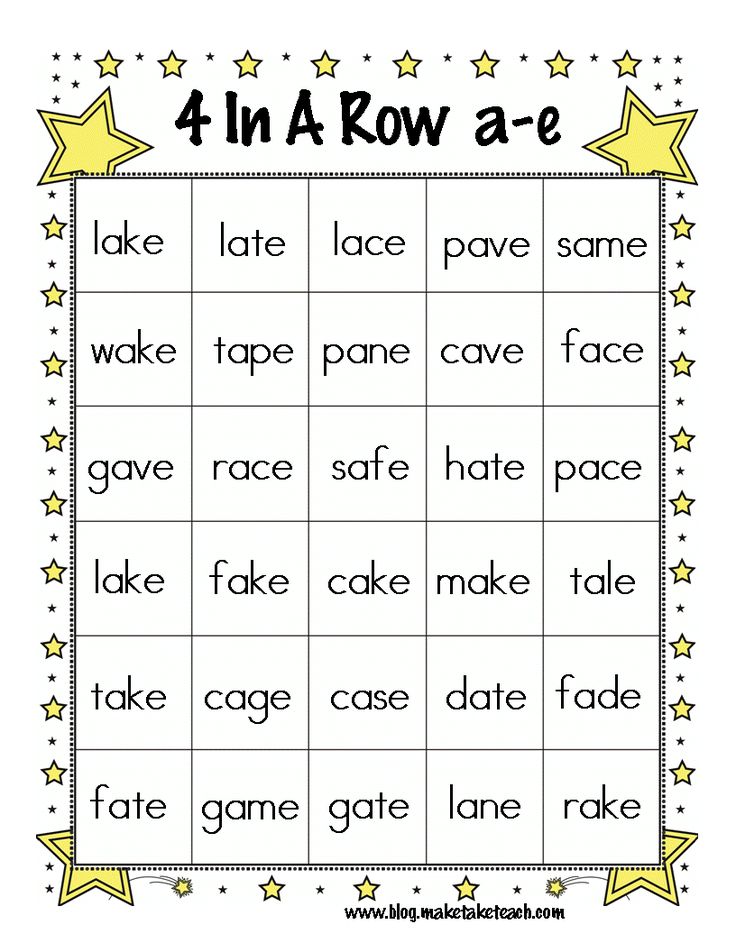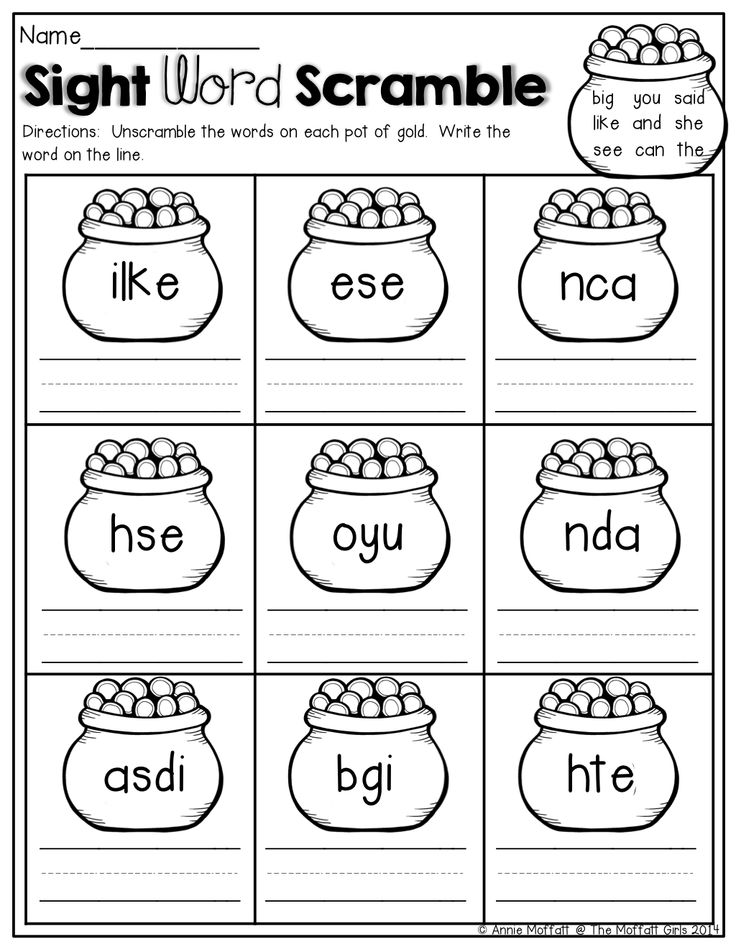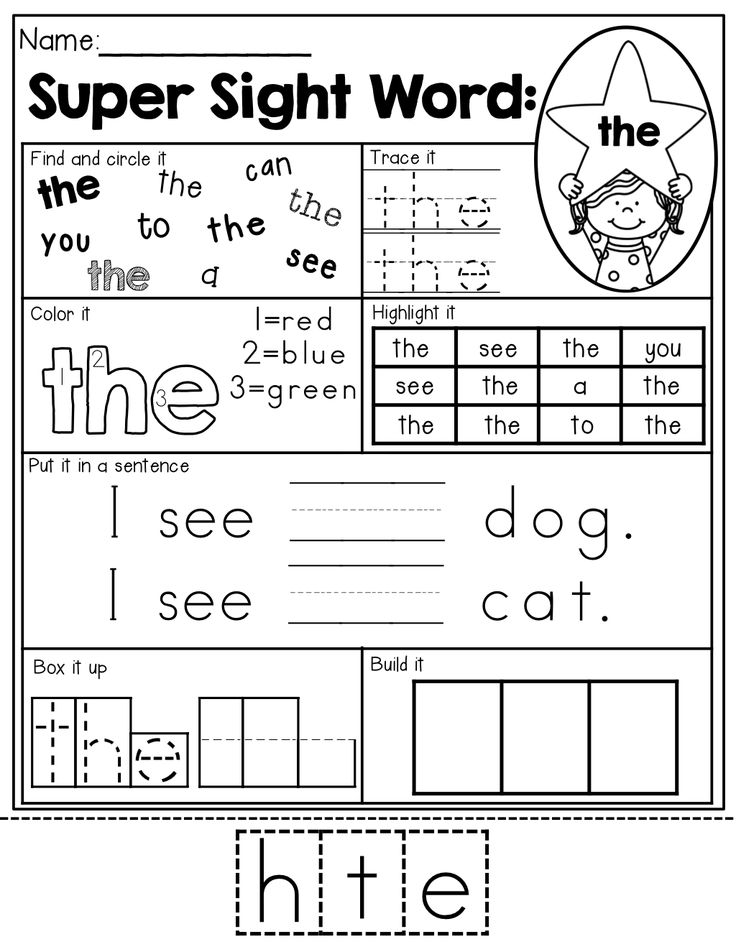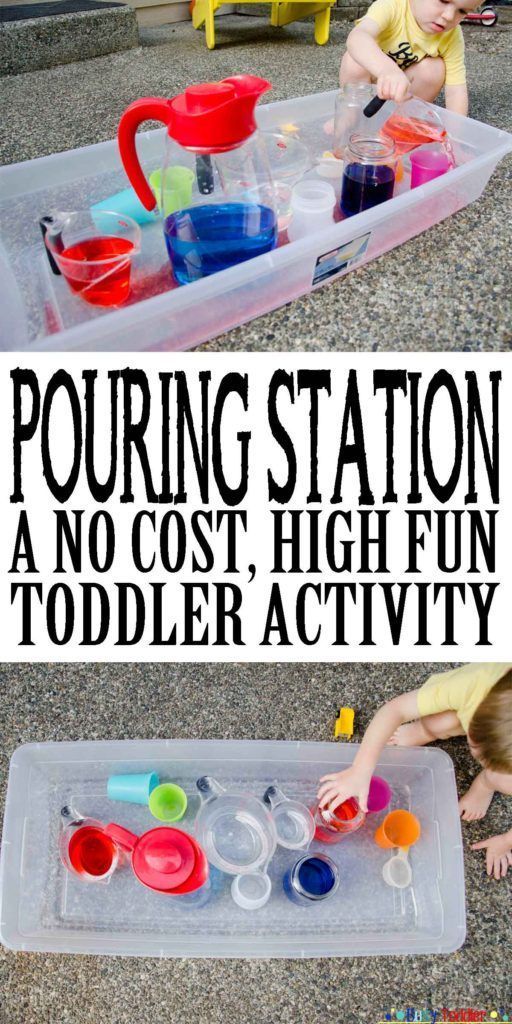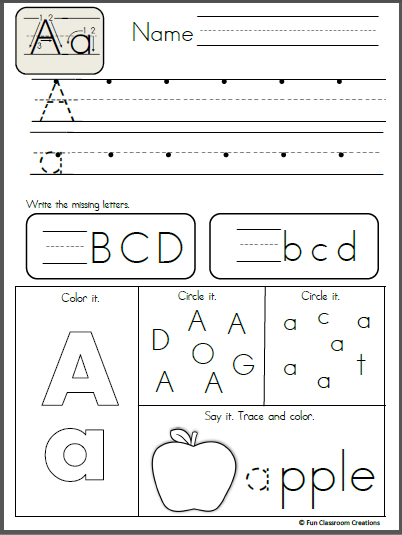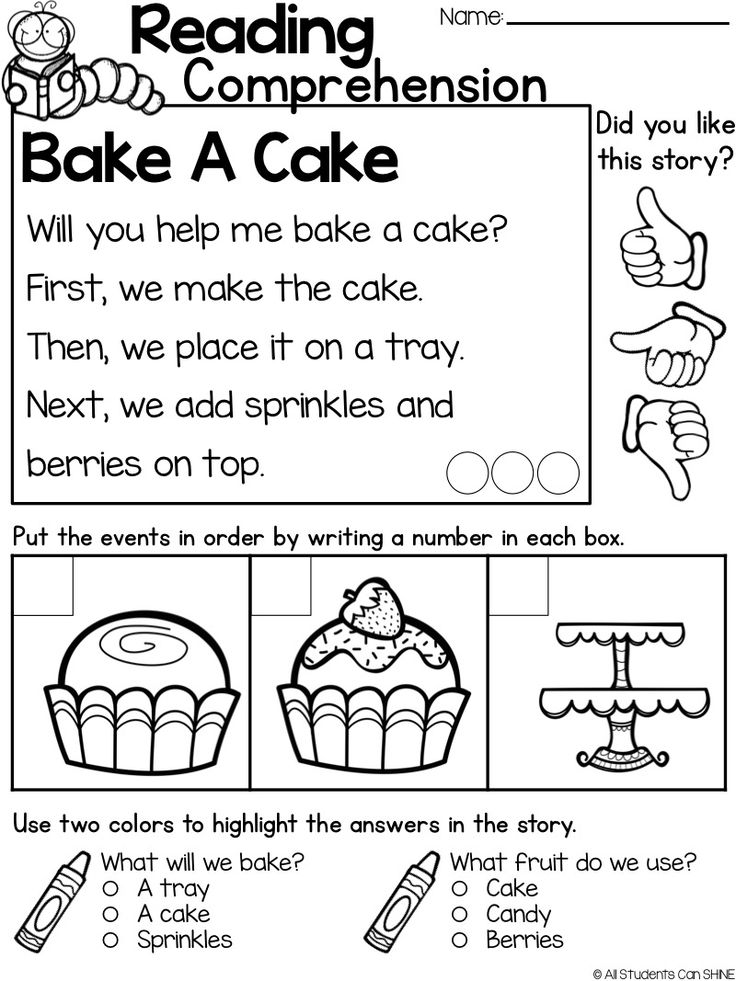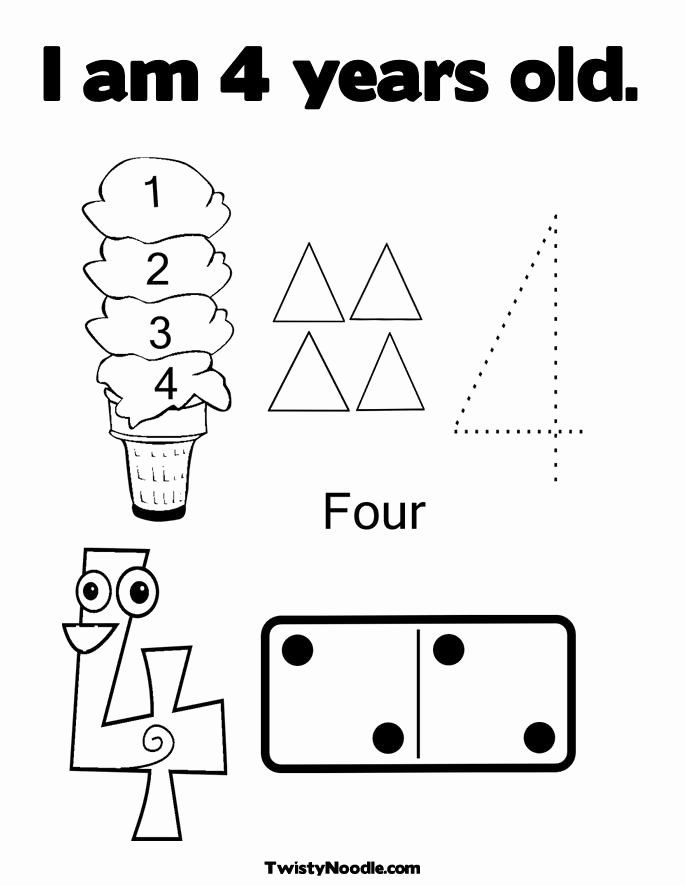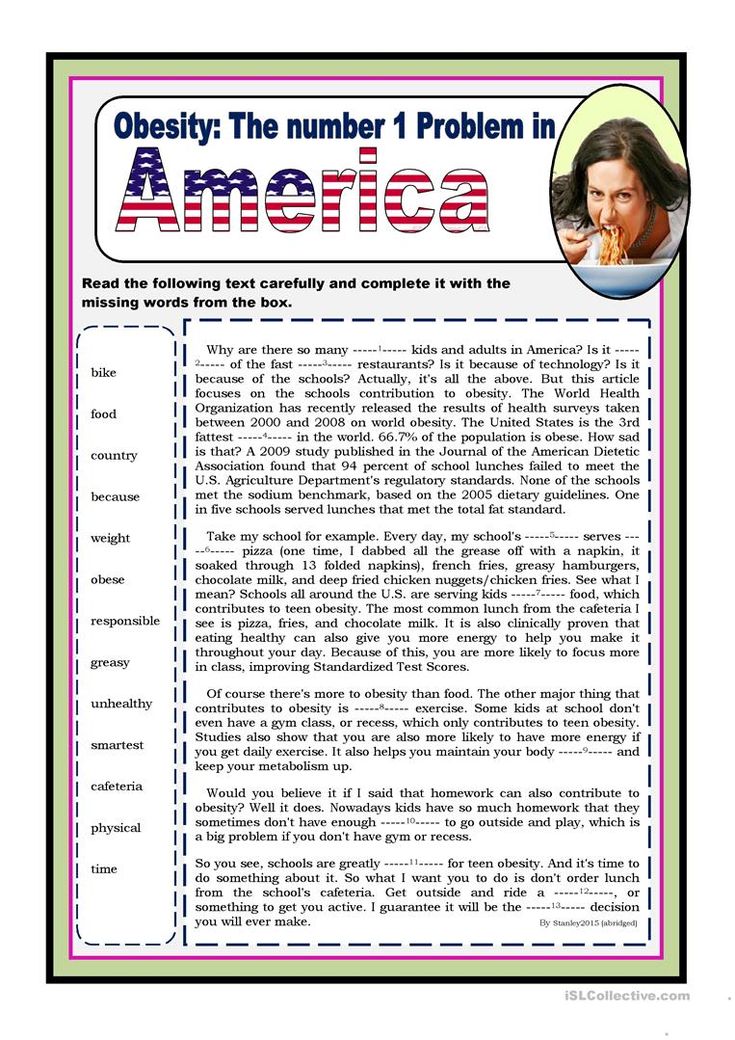Silent e long vowel words
Mastering ‘Silent e’ and Becoming More Fluent with Michael, Third Grader
Literacy terms
Multisensory instruction: Instruction that engages more than one sense at a time to help students learn. A multisensory activity can include seeing, talking, hearing, moving, and touching.
‘Silent e’ spelling pattern: A single vowel letter followed by a consonant and then an ‘e’ usually spells a long vowel sound. For example, make, theme, nice, bone, cute. The ‘e’ and the preceding vowel together spell the long vowel sound. At the end of a multisyllable word, the silent e may spell a long vowel (e.g. parade, delete, beehive, remote, perfume) or a schwa sound (e.g., palace, cursive, lettuce).
Related resources from Reading Rockets
Watch other episodes in this series
In the classroom
Reading 101 self-paced course
Additional resources
About Linda Farrell
Linda Farrell is a founding partner at Readsters, an Alexandria, VA-based firm that helps schools implement research-based reading instruction. She is committed to effective early reading instruction to help struggling readers become strong readers, and to ensure that strong readers achieve their full potential.
Linda works in schools throughout the U.S. training and coaching teachers and modeling effective reading instruction. She also has designed curricula in Niger and Senegal for children to learn to read in their local languages.
Linda is a former English teacher and she was a National LETRS trainer for seven years. She has co-authored assessments and curricula for teaching reading, as well as several other published works. Linda can be reached at: [email protected]
Transcript
Mastering ‘Silent e’ and Becoming More Fluent with Michael, Third Grader
[Music]
Michael: I couldn’t find my house.
Linda Farrell: When you went back, you couldn’t find your house?
Michael: No.
Michael is in third grade at Windy Hill Elementary School in Calvert County, Maryland.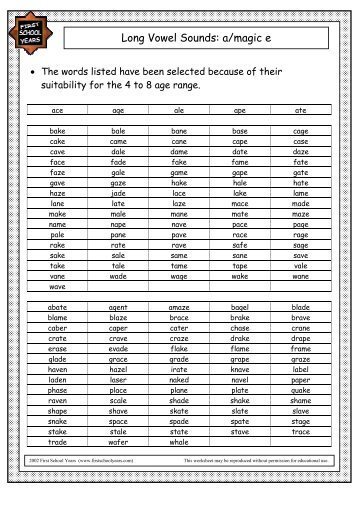 Reading expert Linda Farrell will be helping him work toward mastering the ‘silent e’ letter pattern. It’s part of a plan to speed up his reading.
Reading expert Linda Farrell will be helping him work toward mastering the ‘silent e’ letter pattern. It’s part of a plan to speed up his reading.
Linda Farrell: When we assessed Michael, I found him to be a very interesting student. He’s in the third grade, and he’s a very slow reader. He was quite accurate … not perfectly accurate, but he did pretty well in text. And he understood what he read.
Linda Farrell: Just start reading right here, and you’re gonna read right to the number, okay?
Michael: Don was a lad. Pip was a pup. Don and Pip had a run. The sun was hot.
Linda Farrell: Okay …
Linda Farrell: And when we dug deeper into Michael, what we found is that he has almost mastered basic skills. But it’s the almost that’s keeping him from being faster and more accurate. The good thing about him is that he’s not a guesser. That’s why he’s slow.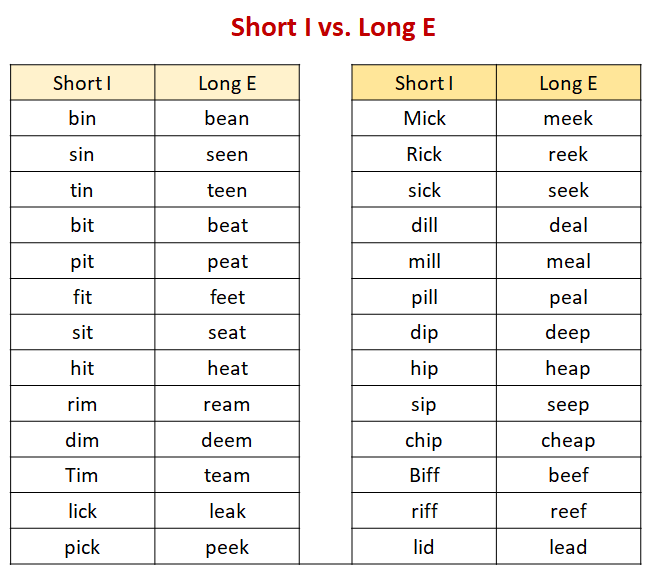 He’s trying to get it right. He’s not trying to race through and guess.
He’s trying to get it right. He’s not trying to race through and guess.
Michael can read many words accurately. But he reads slowly. To find out why, Ms. Farrell first checks to make sure that Michael knows his vowel sounds, both long and short.
Linda Farrell: What’s the short ‘a’ sound?
Michael: Short ‘a’ … /a/.
Linda Farrell: /a/. What’s the short ‘e’ sound?
Michael: /eh/
Linda Farrell: What’s the short ‘i’ sound?
Michael: /i/
Linda Farrell: The short ‘o’ sound?
Michael: /ah/
Linda Farrell: And the short ‘u’ sound?
Michael: /u/
Linda Farrell: You do know your vowel sounds — your short vowel sounds. Do you know your long vowel sounds?
Michael: [nods]
Linda Farrell: What are they?
Michael: /ay/, /ee/, /eye/, /oh/, and /you/
Linda Farrell: You got it.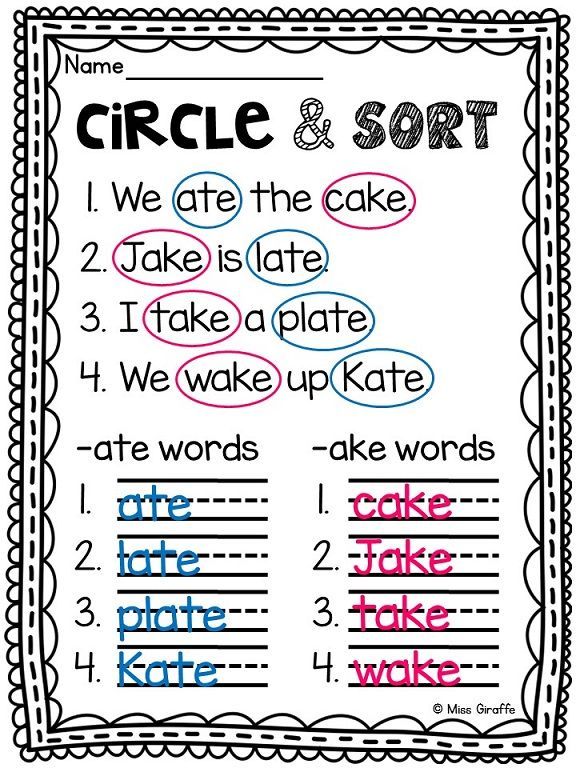 Okay.
Okay.
Then she checks Michael’s phonemic awareness. That’s his ability to notice, to think about, and to work with the individual sounds in words.
Linda Farrell: Now we’re gonna stretch a couple of words, okay? The way you stretch words is you go like this. Get ready. Okay, sit up straight and get ready. Okay? I’ll say a word and you repeat it. Bake.
Michael: Bake.
Linda Farrell: Okay. Now we stretch it. /b, ay, k/ … bake. You stretch it.
Michael: /b, ay, k/ … bake
Linda Farrell: Okay. And I’m gonna ask you what’s the vowel sound in bake. Do you know the vowel sound in bake?
Michael: /ay/
Linda Farrell: /ay/. And what do we call that vowel sound? Short ‘a’ or long ‘a’?
Michael: Long ‘a.’
Linda Farrell: Great. Ready? Back. Repeat?
Michael: back
Linda Farrell: Stretch back.
Michael: /b, a, k/ … back
Linda Farrell: What’s the vowel sound in back?
Michael: ‘a’
Linda Farrell: ‘A’ is the name of the letter. Can you stretch back?
Michael: /b, a/ …
Linda Farrell: Stop right there. What’s that sound right there?
Michael: /a/
Linda Farrell: /a/. When I ask you for a sound, it has to be one of the sounds on your fingers. So the vowel sound in back is what?
Michael: /a/
Linda Farrell: What do we call that sound?
Michael: Short ‘a.’
Linda Farrell: Ready?
Linda Farrell: Even though Michael knew his short vowel sounds and he knew his long vowel sounds when I asked — pretty well for somebody who hadn’t really been having phonics lessons. And he could, I’d say stretch the sounds, /b/ /i/ /t/. He could stretch that. “What’s the vowel sound in bit?” “‘I.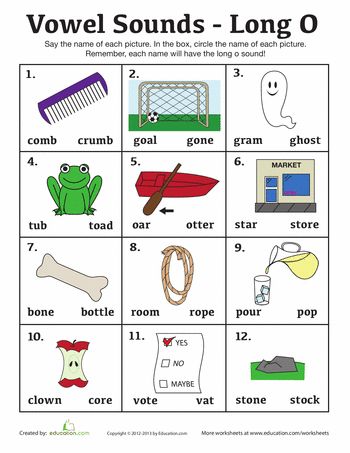 ’” He wanted to go and give me the letter, which tells me he’s not thinking in terms of sounds. We have to straighten out all that. What’s the sound? What’s the name of the letter? What do we call the sound? And we worked with some of that with him so that when I went to this is an /a/, and this is an /ay/, he could think in terms of sounds.
’” He wanted to go and give me the letter, which tells me he’s not thinking in terms of sounds. We have to straighten out all that. What’s the sound? What’s the name of the letter? What do we call the sound? And we worked with some of that with him so that when I went to this is an /a/, and this is an /ay/, he could think in terms of sounds.
Linda Farrell: Tight. Repeat.
Michael: Tight.
Linda Farrell: Stretch.
Michael: /t, eye, t/ … tight
Linda Farrell: What’s the vowel sound in tight?
Michael: /eye/
Linda Farrell: What do we call it?
Michael: A long ‘i.’
Linda Farrell: Ready? Fish.
Michael: /f, i, sh/ … fish
Linda Farrell: Vowel sound?
Michael: /i/
Linda Farrell: What do we call it?
Michael: Short ‘i.’
Linda Farrell: You got it. You’re getting it aren’t you?
Next Ms.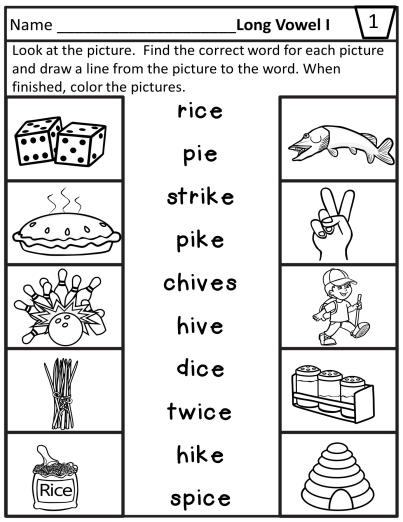 Farrell has Michael read a passage containing consonant-vowel-consonant words like hat and ran, further checking that short vowel knowledge.
Farrell has Michael read a passage containing consonant-vowel-consonant words like hat and ran, further checking that short vowel knowledge.
Linda Farrell: Try the gray box.
Michael: Don got a tan hat. He sat on a log. He had a nap in the sun.
Linda Farrell: I think this is just a little teeny tiny bit too easy for you. So we have to get harder.
Michael: Yeah, it was really easy.
Linda Farrell: It was.
But when Ms. Farrell gave Michael a passage with the ‘silent e’ vowel pattern – including words like ‘luke’ and ‘rice’ – his accuracy fell off.
Linda Farrell: Now I’m just gonna ask you to read this right here. Okay?
Michael: Mike went to a lake with luck. They rode, rode their bikes to the lake. They had rick, I mean, rike, lim, limes, chips, and cake in a blackpack.
Linda Farrell: A student who can tell you /i/ is the short ‘i’ sound, /eye/ is the long ‘i’ sound, can tell you all the rules, and yet they don't read it correctly, the word correctly — that's often a result of a slow print processor.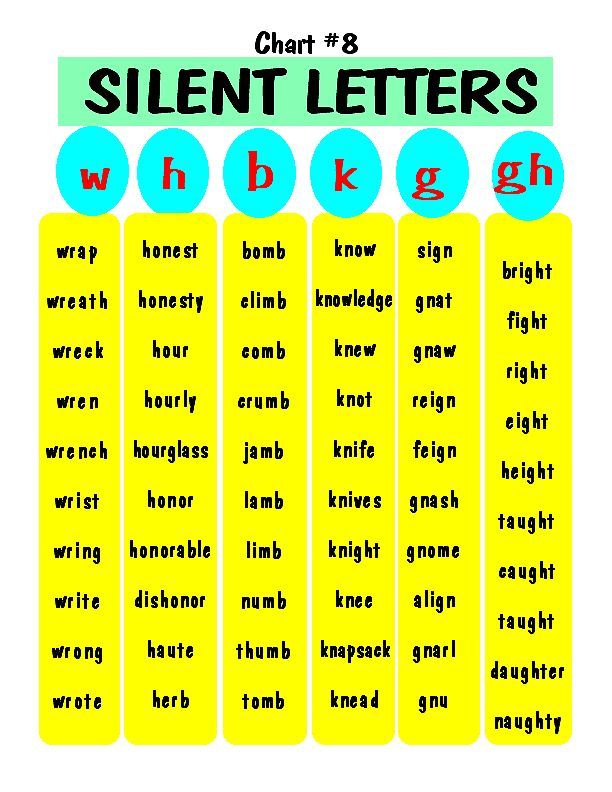 What happens is ... when print gets there, they have a slow reaction time to pulling out what that print is trying to say, whatever sound, whatever word.
What happens is ... when print gets there, they have a slow reaction time to pulling out what that print is trying to say, whatever sound, whatever word.
Michael can get faster by fully absorbing and mastering the ‘silent e’ spelling pattern, so that when he sees a word with a vowel, a consonant, and an ‘e’ at the end – such as lake — he automatically knows that the vowel will be long. How can he master this?
Linda Farrell: Not teaching him rules. He knows the rules. I didn't ask him, but he could have told me the rule that ‘e’ jumps over. What we do is get him to recognize the pattern. If it's one letter, it's a short sound. If it's that letter plus an ‘e,’ it's a long sound. And we're trying to get him to recognize the pattern.
Linda Farrell: Now I’m going to do some teaching. And I’m gonna see if you can get this 100% next time, if you can get all the words right. And here is the teaching we’re gonna do. We are going to learn about ‘silent e.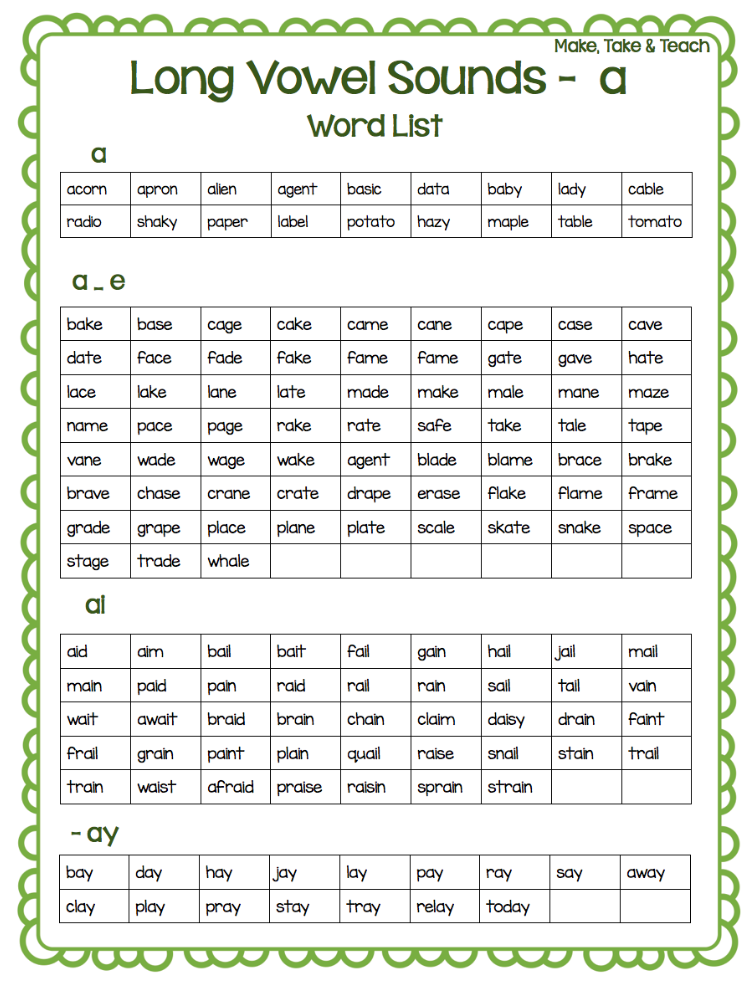 ’ I bet you’ve heard ‘silent e’ before, haven’t you. Okay. So we’re gonna learn something called two-finger touch and say. So when you touch with one finger, you’re gonna say /a/. That’s the short ‘a’ sound, so touch with one finger. Are you — if you were to write your name, yeah. So touch with this finger, okay?
’ I bet you’ve heard ‘silent e’ before, haven’t you. Okay. So we’re gonna learn something called two-finger touch and say. So when you touch with one finger, you’re gonna say /a/. That’s the short ‘a’ sound, so touch with one finger. Are you — if you were to write your name, yeah. So touch with this finger, okay?
Michael: Okay. /a/
Linda Farrell: Okay. When we touch like this, we’re gonna say /ay/. When it’s an ‘a’ and an ‘e’ together, go /ay/. Can you do that?
Michael: /ay/
Linda Farrell: Okay, so go …
Michael: /a/, /ay/
Linda Farrell: Now watch me touch and say this word. /M, a, d/ … mad. You do it.
Michael: /M, a, d/ … mad.
Linda Farrell: So I used one finger to touch that ‘a.’ Now watch this. I have an ‘a’ and an ‘e’ here. So I’m gonna use two fingers, so watch me. /M, ay, d/ … made. You do it.
Michael: /M, ay, d/ … made.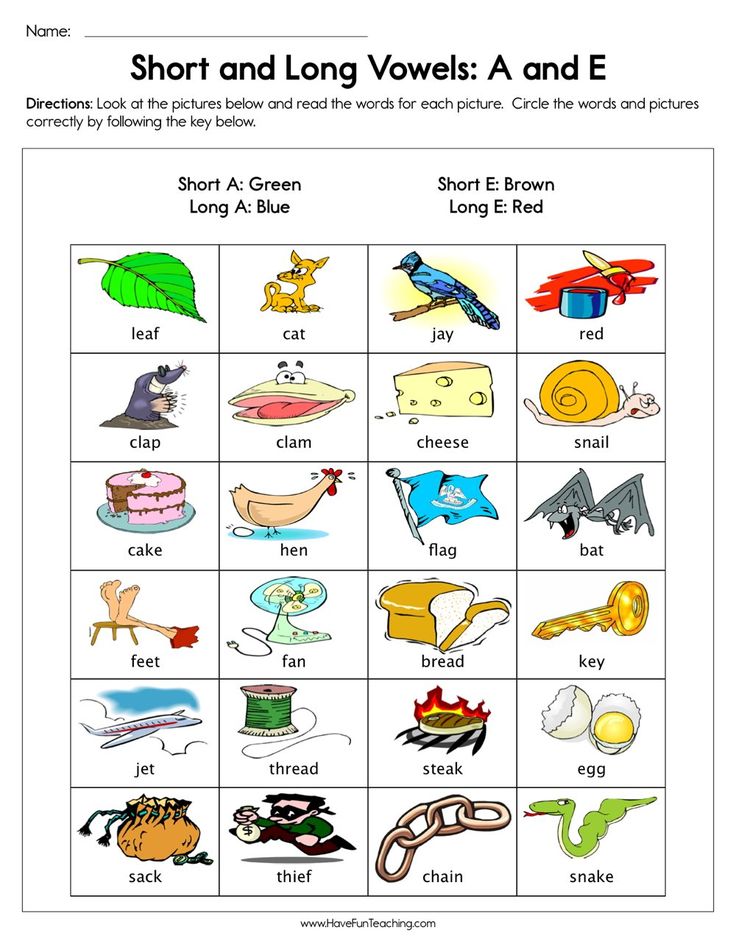
Linda Farrell: Okay, and you go like this: /m, ay, d/ … made. You do it.
Michael: /M, ay, d/ … made.
Linda Farrell: Okay. So you know about two-finger touch and say.
Ms. Farrell thinks this multisensory technique will help Michael internalize his ability to recognize the ‘silent e’ letter pattern. It takes a while to learn this approach, but it will be worth it.
Linda Farrell: Now, we’re gonna just practice, right here. So I want you to practice saying /ay/, /a/, /ay/, /a/, /a/, /ay/. Okay.
Michael: /ay/, /a/, /ay/, /a/, /a/, /ay/
Linda Farrell: Let’s do this one again. Okay?
Michael: /a/, /ay/, /a/, /a/, /a/, /ay/, /ay/, /a/, /ay/, /a/
Linda Farrell: Ten out of 10. Okay. Now what we’re gonna do is we are gonna practice touch and say. So can you touch and say that word?
Michael: Rat.
Linda Farrell: Okay.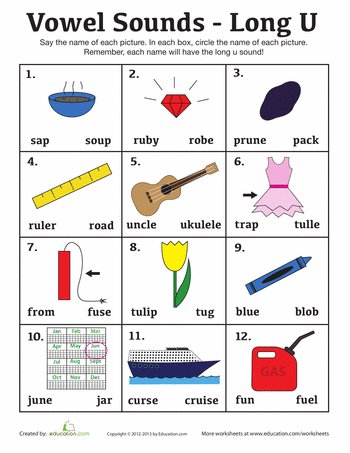 And here’s how we touch and say. /R, a, t/ … rat. /R, ay, t/ … rate. You do it.
And here’s how we touch and say. /R, a, t/ … rat. /R, ay, t/ … rate. You do it.
Michael: /R, a, t/ … rat.
Linda Farrell: Touch and say that one. Now what do you do when you have an ‘a’ and a …
Michael: /R, ay, t/ … rate.
Linda Farrell: Okay. Touch and say that one again.
Michael: /R, a, t/ … rat.
Linda Farrell: Okay.
Michael: /R, ay, t/ … rate.
Linda Farrell: Try that one again.
Michael: /R, ay, t/ … rate.
Linda Farrell: Okay. Now we’re gonna try something a little different. This time I’m just gonna go /a/, rat, /ay/, rate. You do it.
Michael: /a/, rat, /ay/, rate
Linda Farrell: Okay. Try it again.
Michael: /a/, rat, /ay/, rate
Linda Farrell: Okay. Now you’re gonna do these. Just like you did rat and rate, do these.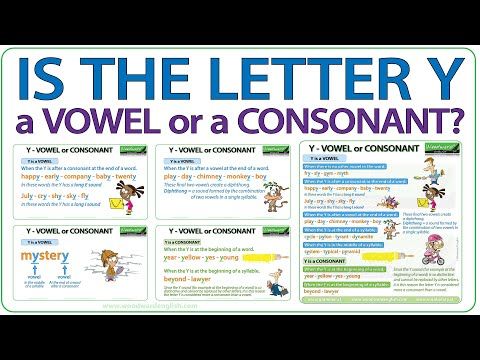 Okay.
Okay.
Michael: /a/ …
Linda Farrell: Watch me. I’m gonna do this. /Ay/, mate, /a/, mat, /ay/, tape, /a/, rack, /a/, tap, /ay/, rake. You do it.
Michael: /Ay/, mat — mate, /a/, mat …
Linda Farrell: One finger. Do two fingers.
Michael: /Ay/, mate, /a/ …
Linda Farrell: [whispering] One finger.
Michael: /Ay/, tape, /a/, rack, /a/, tap, /ay/, rake.
Linda Farrell: You just got all those right. We’re gonna try something a little different this time. I just want you to touch the vowel sound. Say it. Don’t even read the word. So you’ll go like this: /ay/, /a/. Okay? You do it.
Michael: /ay/, /a/, /ay/, /a/, /a/, /ay/
Linda Farrell: Okay. Can you do that one more time? I wanna make sure you’re touching with one finger when you should and two fingers …
Michael: /a/ …
Linda Farrell: Wait, wait.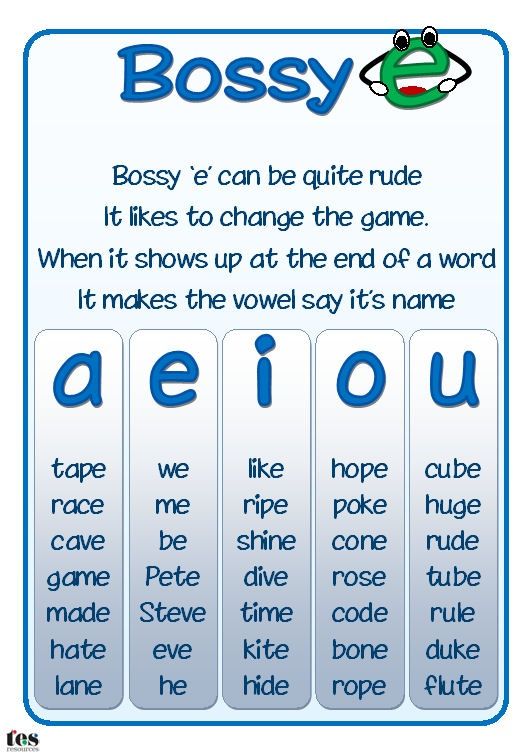
Michael: /Ay/. Wait. /Ay/, /a/, /ay/, /a/, /a/, /ay/.
Linda Farrell: Oh! It was perfect. Okay. Now go back and touch with two fingers and then read the word. Okay. And, uh, down here.
Michael: /Ay/, mat — mate.
Linda Farrell: Start again.
Michael: /Ay/, mate…
Linda Farrell: Go /ay/, mate …
Michael: /Ay/, mate, /a/, mat …
Linda Farrell: [whispering] One finger. One finger.
Michael: /A/, mat, /ay/, tape, ra- … /a/, rack, /a/, tap, /ay/, rake.
Linda Farrell: Okay …
Linda Farrell: That skill is recognizing spelling patterns. It is incredibly important, because many people will tell you the English language is nutso. It — sometimes a letter is spelled this way and sometimes the letter is spelled that way. And the English language is not nutso.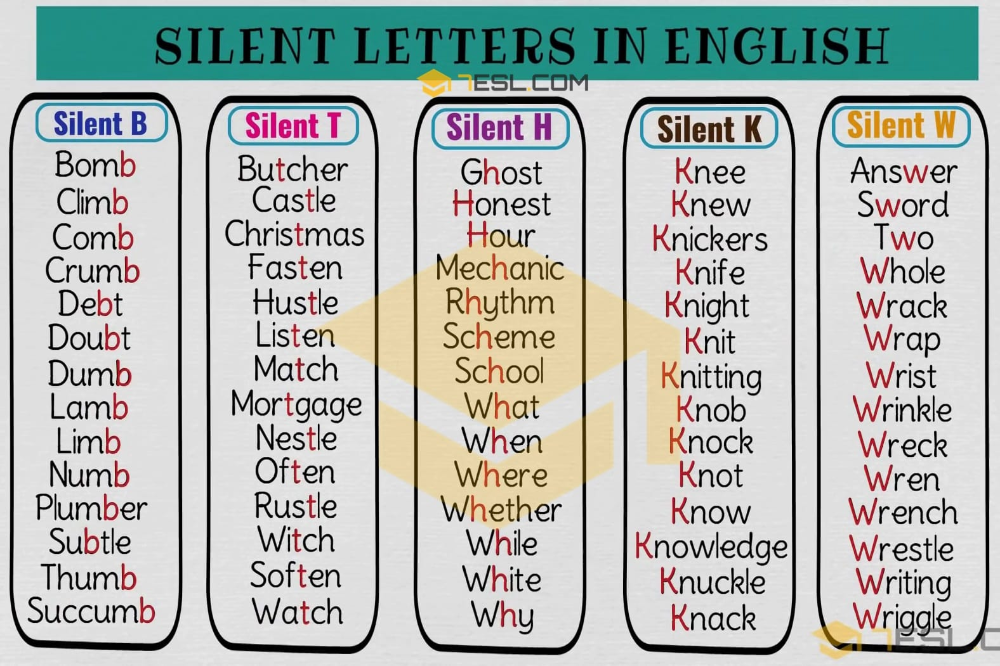 It follows patterns. It follows lots of patterns. Most of the time in a one syllable word when you have a vowel and then you have a consonant and an ‘e’ at the end, that vowel is going — with that ‘e’ — is going to spell the long vowel sound. It’s not random. It is absolutely not random. Strong readers — and especially strong spellers — pick up these patterns automatically. Those who struggle to learn to read or look like they’re struggling, who need more practice really, they don’t pick them up on their own; and that’s where we come in. We’re teachers. That’s when we get to teach as opposed to just guide. So understanding the spelling patterns in English will tell you with about 80% accuracy what that vowel sound should be.
It follows patterns. It follows lots of patterns. Most of the time in a one syllable word when you have a vowel and then you have a consonant and an ‘e’ at the end, that vowel is going — with that ‘e’ — is going to spell the long vowel sound. It’s not random. It is absolutely not random. Strong readers — and especially strong spellers — pick up these patterns automatically. Those who struggle to learn to read or look like they’re struggling, who need more practice really, they don’t pick them up on their own; and that’s where we come in. We’re teachers. That’s when we get to teach as opposed to just guide. So understanding the spelling patterns in English will tell you with about 80% accuracy what that vowel sound should be.
Linda Farrell: See if you can do that whole row … 10 words. And you’re gonna do /ay/ and then read the word. Okay? And make sure you get your fingers right. You can go slowly. I don’t care how fast you go.
Michael: /a/, stack …
Linda Farrell: Let’s try that — what happened? What happens when you …
Michael: …/ay/, stake, /a/, stack …
Linda Farrell: [whispering] Touch that with one finger.
Michael: … /a/, stack …
Linda Farrell: What?
Michael: … /a/, mad, /ay/ — wait, I mean /a/, fat, /ay/, made.
Linda Farrell: You would see, even though he knew the word was shake, he would read shack, then he'd say, “No, shake,” because he wants that word to come out before his brain has processed. One of the things we would want to do if we were working with him long term is get him to slow down first, because if he'd slow down, he would eventually get faster, because he would be in the habit of doing things accurately. And he would be using the patterns. He has every ability to be an accurate reader if he can recognize the patterns — and to read at a reasonable rate.
So Ms. Farrell focuses on accuracy, knowing that speed will come later, once Michael has really mastered the skill.
Linda Farrell: That was 100% perfect.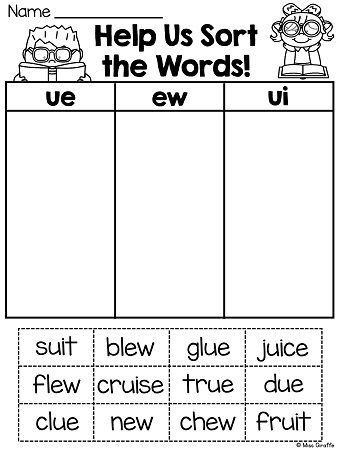 High five on this one, too. Okay, now you’re gonna read some — you don’t have to do the /ay/, /a/. You just read the words.
High five on this one, too. Okay, now you’re gonna read some — you don’t have to do the /ay/, /a/. You just read the words.
Michael: Okay.
Linda Farrell: Okay? Okay. So what, what line do you wanna do?
Michael: I wanna do that one.
Linda Farrell: Okay. Do number four.
Michael: Shad, glade, same, Sam, pane.
Linda Farrell: Okay. Now we’re gonna go back to that passage that we just read. Let’s see if you can read it again. Go.
Michael: Mike went to a lake with Luke. They rode their bikes to the lake. They had rice.
Linda Farrell: What you saw is that once we taught Michael how to read long and short ‘a,’ he applied it in the paragraph the next time. And we didn’t have him read a new paragraph. We had him read the same paragraph. Once he reads that paragraph accurately, we’re going to go to another one. But if it takes him 10 times to read that paragraph accurately, we’re going to keep reading that paragraph accurately, applying his new skill that he had used.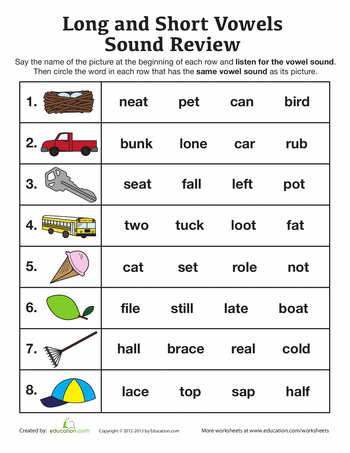
Michael: They also had Coke to drink.
Linda Farrell: 30 out of 30. You got 30 out of 30
Linda Farrell: He made an improvement. And had we had more time, I think we would have seen him making even more improvement as he practiced. Michael was a real good example of the importance and necessity of practicing to mastery. Even though he’s in the third grade, we need to make sure that we get his basic phonics and his even advanced phonics straightened out and that he’s accurate at those, automatically.
[Music]
We’d like to thank the wonderful students and families at Windy Hill Elementary School in Calvert County, Maryland. We hope that sharing these experiences will help other children who are learning to read.
Special thanks also to Kelly Cleland, Julie Donovan, Joanne Harbaugh, and their outstanding colleagues at Windy Hill Elementary … and to Leanne Meisinger at Calvert County Public Schools.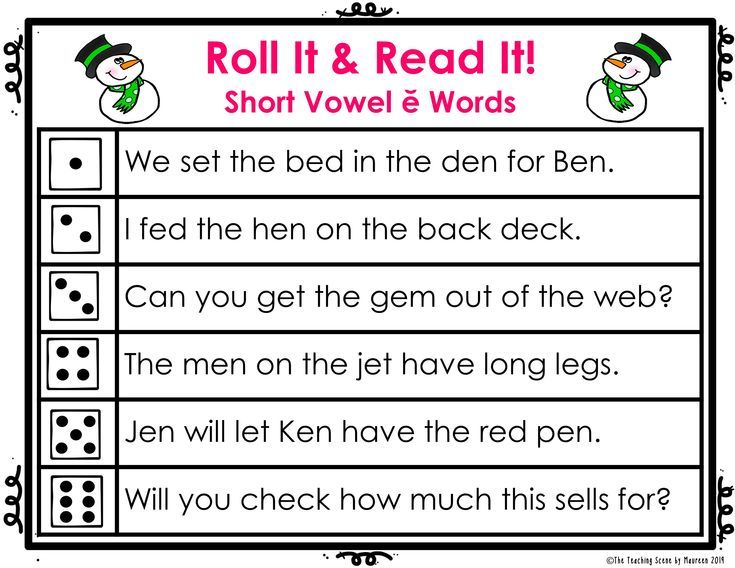
We are deeply grateful to Linda Farrell, Michael Hunter, and Nicole Lubar of Readsters for their invaluable contributions to this project.
Produced by Noel Gunther
Edited by Christian Lindstrom
Graphic Design: Tina Chovanec
Camera: Richard Chisolm
Audio: Dwayne Dell
For more information about teaching reading, please visit
www.ReadingRockets.org
Reading Rockets is a service of WETA, Washington, D.C.
© 2019, WETA, Washington, D.C.
Long Vowel - Silent e Lesson Plan
Objectives:
- Students will recognize and pronounce words that follow the c-v-c-e and v-c-e rule where the first vowel is a long vowel and the final e is silent.
- Students will be able to spell and write simple long vowel words with c-v-c-e and v-c-e spelling patterns.
About the Concept:
There are several regular long vowel spelling patterns in the English language.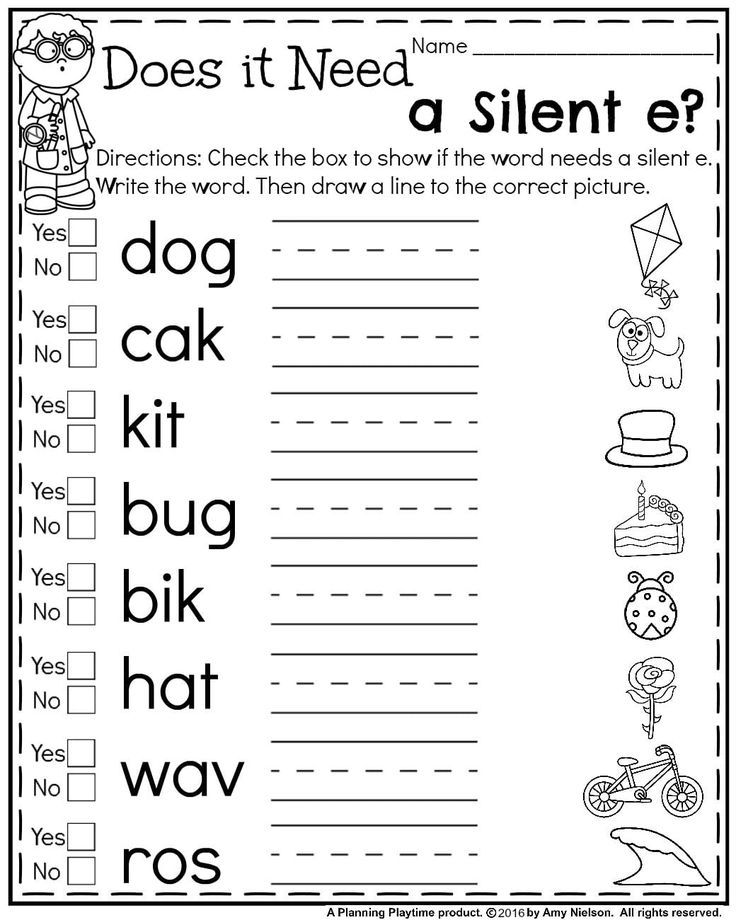 The c-v-c-e pattern (consonant-vowel-consonant-final e) is a long vowel spelling pattern which occurs quite frequently in early reading and spelling. Basically, the phonics rule for this pattern states that when a vowel and a final e are separated by a single consonant, the first vowel is long and the final e is silent. Some words that follow this rule are cake, scene, kite, hope, and rude. The c-v-c-e pattern occurs most frequently when the long vowel is a, i, and o and less frequently when the first vowel is e or u. The song Silent e (Sing Your Way Through Phonics Volume 1) teaches children how the vowel sound can change from a short vowel sound to a long vowel sound when a silent e is added to the end of a word. For example the short i in hid changes to a long i in hide, the short o in hop changes to the long o in hope, the short u in cut changes to the long u in cute, and the short a in cap changes to the long a in cape.
The c-v-c-e pattern (consonant-vowel-consonant-final e) is a long vowel spelling pattern which occurs quite frequently in early reading and spelling. Basically, the phonics rule for this pattern states that when a vowel and a final e are separated by a single consonant, the first vowel is long and the final e is silent. Some words that follow this rule are cake, scene, kite, hope, and rude. The c-v-c-e pattern occurs most frequently when the long vowel is a, i, and o and less frequently when the first vowel is e or u. The song Silent e (Sing Your Way Through Phonics Volume 1) teaches children how the vowel sound can change from a short vowel sound to a long vowel sound when a silent e is added to the end of a word. For example the short i in hid changes to a long i in hide, the short o in hop changes to the long o in hope, the short u in cut changes to the long u in cute, and the short a in cap changes to the long a in cape. By continually alternating between the rule and examples of the rule, the song Silent e helps students apply the long vowel -silent e rule in their reading and writing. Other long vowel spelling patterns are covered in the Sing Your Way Through Phonics Vol. 2 song, Spelling Choices. Be sure to read the “Extensions” section below for additional silent e activities and for additional words with c-v-c-e patterns.
By continually alternating between the rule and examples of the rule, the song Silent e helps students apply the long vowel -silent e rule in their reading and writing. Other long vowel spelling patterns are covered in the Sing Your Way Through Phonics Vol. 2 song, Spelling Choices. Be sure to read the “Extensions” section below for additional silent e activities and for additional words with c-v-c-e patterns.
Materials:
- Sing Your Way Through Phonics Volume 1 CD, Tracks 17 and 18 (Listen to audio sample)
- Sing Your Way Through Phonics Volume 1 Mini-Charts (pp. 74-85)
- Optional: Flip Chart, markers, sticky notes
- Optional: card stock, markers, index cards
Note: If you do not have the CD or Mini-Charts, you can still teach this long vowel - silent e spelling pattern lesson plan using the folk tune listed on the Silent e Song Lyrics page.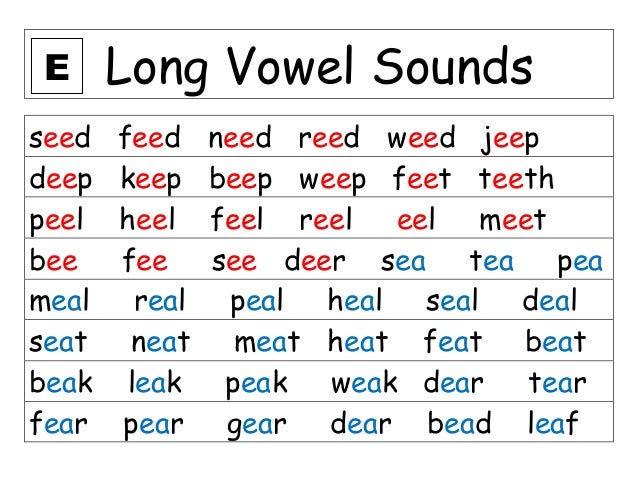 You can create your own mini-charts using the words in bold print letters in each verse of the Song Lyrics.
You can create your own mini-charts using the words in bold print letters in each verse of the Song Lyrics.
Find out more about Sing Your Way Through Phonics products.
Order our cost-saving Volume 1 Combo online.
Procedure:
- Say, “Today, we are going to learn what happens when we put the letter e on the end of a short vowel word. Point to Sing Your Way Through Phonics Vol. 1 Mini-Chart p. 74 and say, "What is the first word on this page?" (rid) "How does the vowel sound in the word rid?" (/ĭ/) "Is the vowel in the word rid long or short?" (short) "How does the word on the bottom look different?" (It has an e on the end.) "When you add a final e to the word rid, it becomes ride. Is the vowel in the word ride long or short?" (long) How does the vowel sound in the word ride? (/ī/) Point to Mini-Chart p.
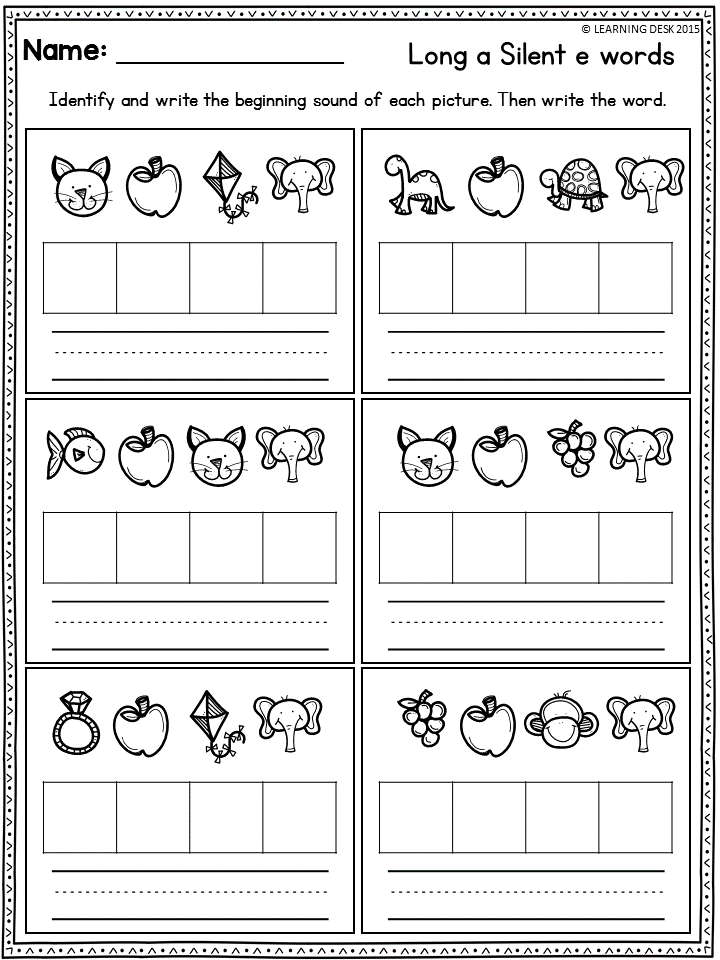 75 and say, "What is the first word on this page? (hid) How does the vowel sound in the word hid? (/ĭ/) Is the vowel in the word hid long or short? (short) How does the word on the bottom look different? (It has an e on the end.) When you add a final e to the word hid, it becomes hide. Is the vowel in the word hide long or short? (long) How does the vowel in the word hide sound? (/ī/)
75 and say, "What is the first word on this page? (hid) How does the vowel sound in the word hid? (/ĭ/) Is the vowel in the word hid long or short? (short) How does the word on the bottom look different? (It has an e on the end.) When you add a final e to the word hid, it becomes hide. Is the vowel in the word hide long or short? (long) How does the vowel in the word hide sound? (/ī/) - Point to Mini-Chart p. 76 and say, "What is the first word on this page?" (rod) "How does the vowel sound in the word rod?" (/ŏ/) "Is the vowel in the word rod long or short?" (short) "When you add a final e to the word rod, it becomes rode. Is the vowel in the word rode long or short?" (long) How does the vowel sound in the word rode? (/ō/) Point to Mini-Chart p.
 75 and say, "What is the first word on this page? (hop) How does the vowel sound in the word hop? (/ŏ/) Is the vowel in the word hop long or short? (short) When you add a final e to the word hop, it becomes hope. Is the vowel in the word hope long or short? (long) How does the vowel in the word hope sound? (/o/)
75 and say, "What is the first word on this page? (hop) How does the vowel sound in the word hop? (/ŏ/) Is the vowel in the word hop long or short? (short) When you add a final e to the word hop, it becomes hope. Is the vowel in the word hope long or short? (long) How does the vowel in the word hope sound? (/o/) - Ask, "So what happens to the vowel when we put a final e on the end of a short vowel word?" (The short vowel becomes long and the e is silent.) Practice reading and saying the vowel sounds in the words on Mini-Chart pp. 78-85: cut /ŭ/, cute /ū/, hug /ŭ/, huge /ū/ [Note that the letter g changes its sound, too.
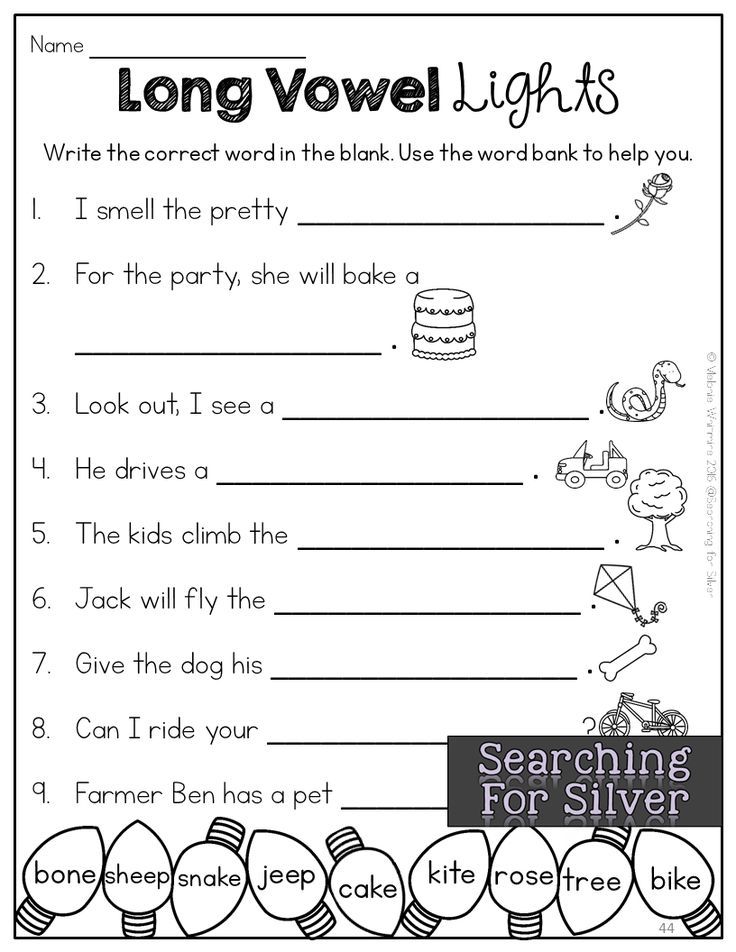 ], cap /ă/, cape /ā/, tap /ă/, tape /ā/, pin /ĭ/, pine /ī/, fin /ĭ/, fine /ī/, pan /ă/, pane /ā/, can /ă/, cane /ā/.
], cap /ă/, cape /ā/, tap /ă/, tape /ā/, pin /ĭ/, pine /ī/, fin /ĭ/, fine /ī/, pan /ă/, pane /ā/, can /ă/, cane /ā/. - Play Silent e (Sing Your Way Through Phonics Vol. 1 CD, Track 17), pointing to the Mini-Chart words and asking the children to join in the song as soon as they think they know the words. Joining in the song will be easy because the format remains the same for every verse. Example: "How do you change rid to ride? Silent e. How do you change hid to hide? Silent e.
 How do you change rid to ride? How do you change hid to hide? End the word with silent e."
How do you change rid to ride? How do you change hid to hide? End the word with silent e." - Say, "Notice that this is an question-and-answer song." Divide the class into two groups. Play CD track 17 again, alternating questions and answers between group 1 and group 2 as follows: (Group 1) How do you change rid to ride? (Group 2) Silent e. (Group 1) How do you change hid to hide?, (Group 2) Silent e. (Group 1) How do you change rid to ride? How do you change hid to hide? (Group 2) End the word with silent e. [Continue in this manner until the song is complete.]
- Play the CD again, and ask Group 1 to sing the part that Group 2 sang and vice versa.
- Review the Long Vowel - Silent e rule aloud together.
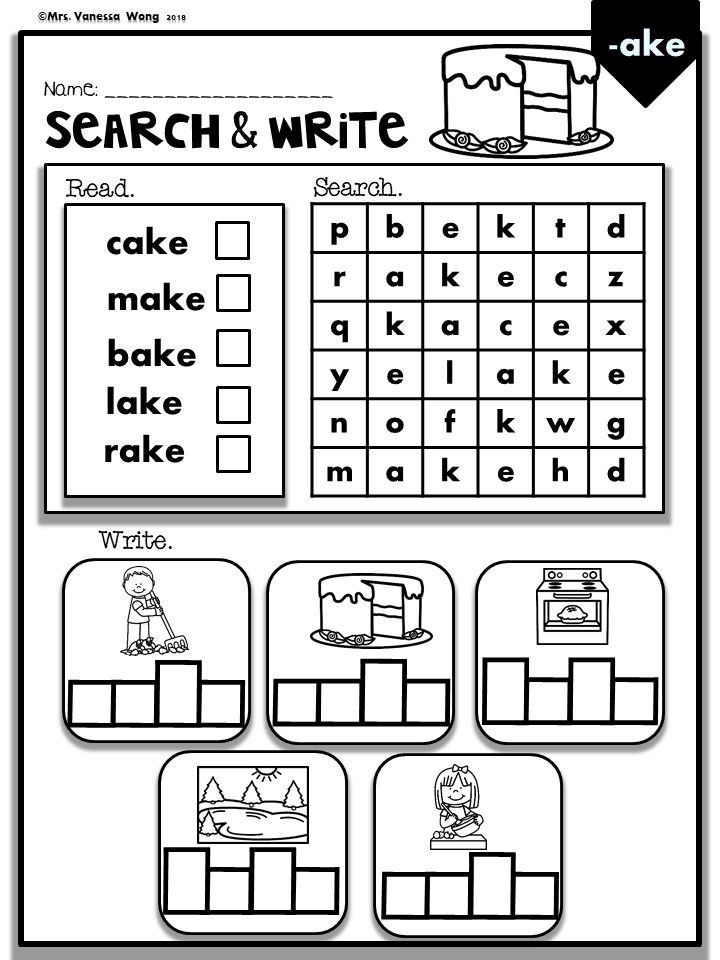 "When e is added to a short vowel word, the short vowel becomes long and the final e is silent.
"When e is added to a short vowel word, the short vowel becomes long and the final e is silent.
Follow-up:
- Practice singing Silent e daily for a week. Then try singing the song without hearing the words, using the instrumental track (Track 18). Allow different students to point to the Mini-Charts words while singing.
- Help students create other sets of c-v-c-e or c-c-v-c-e words for the song. Make 8 copies of Mini-Chart Template B on p.96 and allow students write in the new sets of words. Examples: sal/sale, pal/pale, quit/quite, bit/bite, not/note, tot/tote, tub/tube, cub/cube, slid/slide, bid/bide, shin/shine, spin/spine.
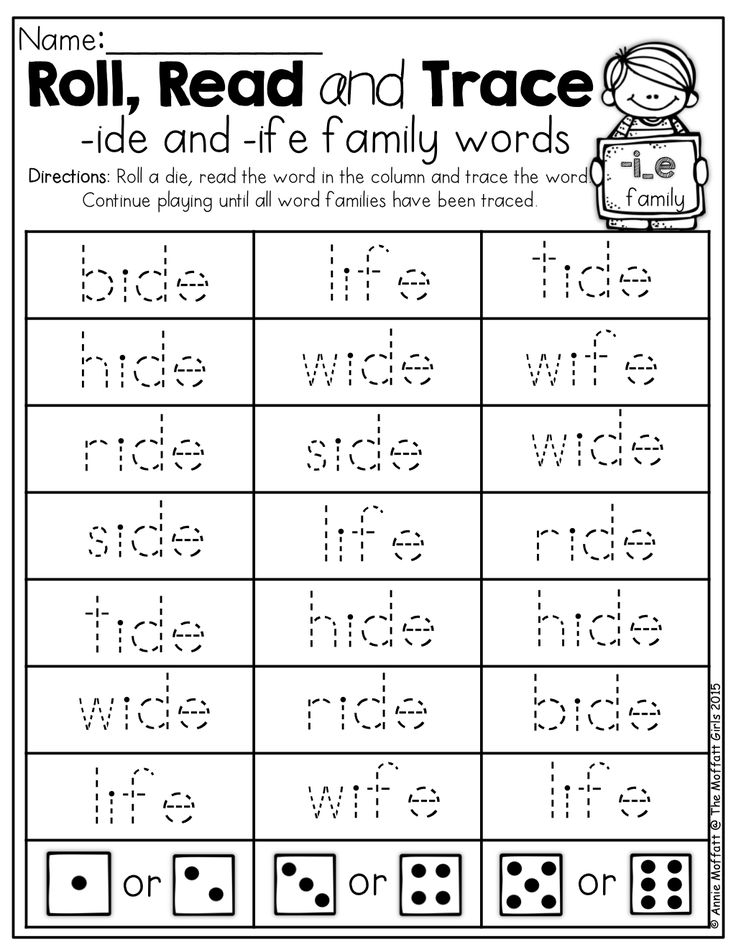 Place these pages back-to-back in page protectors in a 3-ring binder. Then sing the song with the instrumental version (Track 18).
Place these pages back-to-back in page protectors in a 3-ring binder. Then sing the song with the instrumental version (Track 18). - Mark the original words and the alternate examples with symbols for short vowels, long vowels, and silent e.
Extensions:
- Introduce the Read-and-Sing Book, Silent E. As readers sing along with the lively song set to the folktune Hinky Dinky Parlez-Vous, they can read the short vowel words and predict the long vowel words before they turn the page to verify their guesses. In this book, characters are in the business of painting signs. At first, only part of the word on the sign is visible. When the page is turned, the complete word is visible. The partial word has a short vowel sound which changes to a long vowel sound when whole word is painted. Children can learn about additional long vowel spelling patterns in the Read-and-Sing book, Talking and Walking.
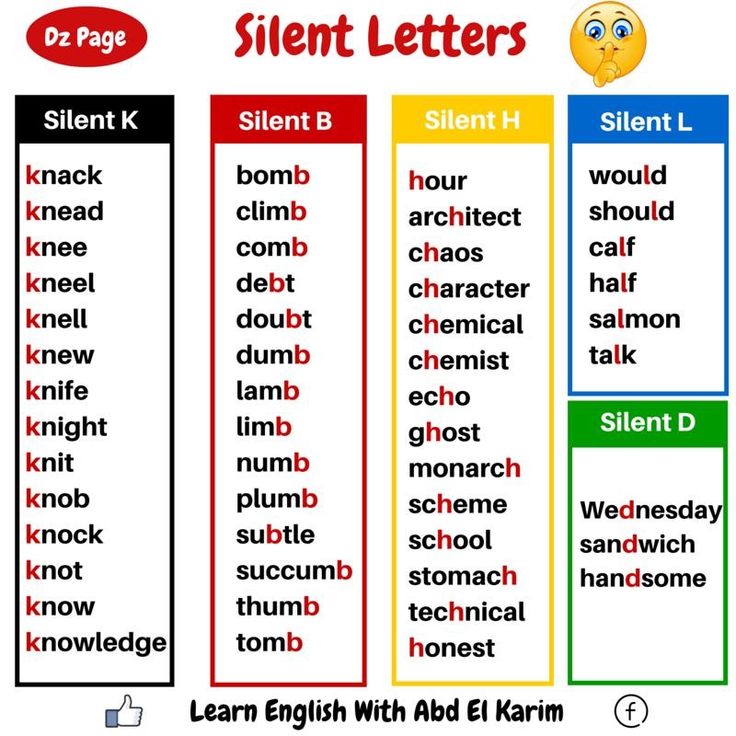 Keep a few copies of the book at a literacy center equipped with headsets so that students can gain practice in listening, singing, and reading long vowel - silent e words.
Keep a few copies of the book at a literacy center equipped with headsets so that students can gain practice in listening, singing, and reading long vowel - silent e words. - Create a silent e flip chart by covering the final e in each word with a sticky note. Children can read the word without the final e, then flip the sticky note and read the word with the final e.
- Play a sorting game by placing long vowel word cards and short vowel word cards in the appropriate pile. Try selecting words with a theme like animals, foods, adjectives, or names.
Evaluation:
- Students read all the words on Mini-Charts pp.74-85 without assistance.
- Students correctly pronounce vowel patterns e_e, a_e, i_e, o_e, and u_e.
Order our cost-saving Sing Your Way Through Phonics Volume 1 Combo online ($33.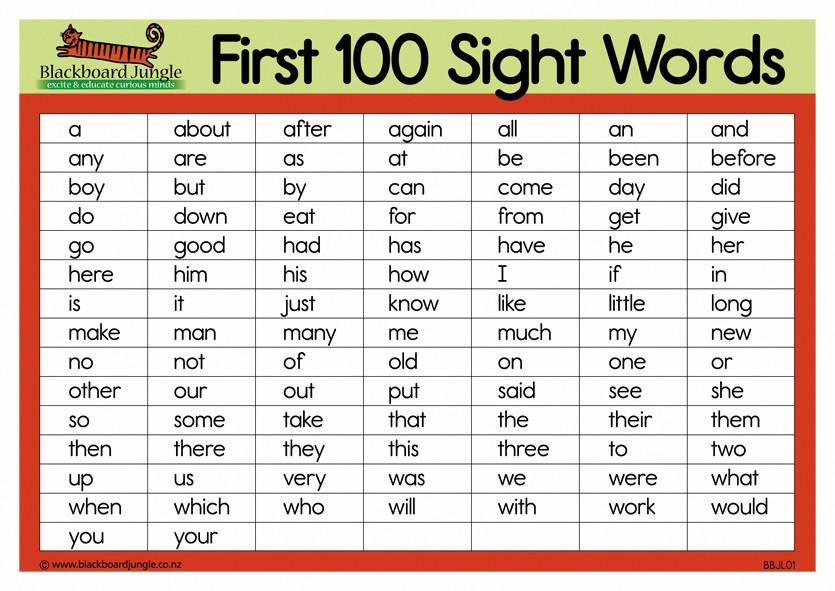 95) containing the CD, Mini-Charts, Song Lyrics, and Teaching Suggestions — everything you need for this lesson! Or, print out an order form to mail/FAX to us.
95) containing the CD, Mini-Charts, Song Lyrics, and Teaching Suggestions — everything you need for this lesson! Or, print out an order form to mail/FAX to us.
study guide for preparing applicants for the Unified State Exam
%PDF-1.5 % 10 obj > endobj 5 0 obj >> endobj 20 obj > endobj 3 0 obj > endobj 40 obj > stream
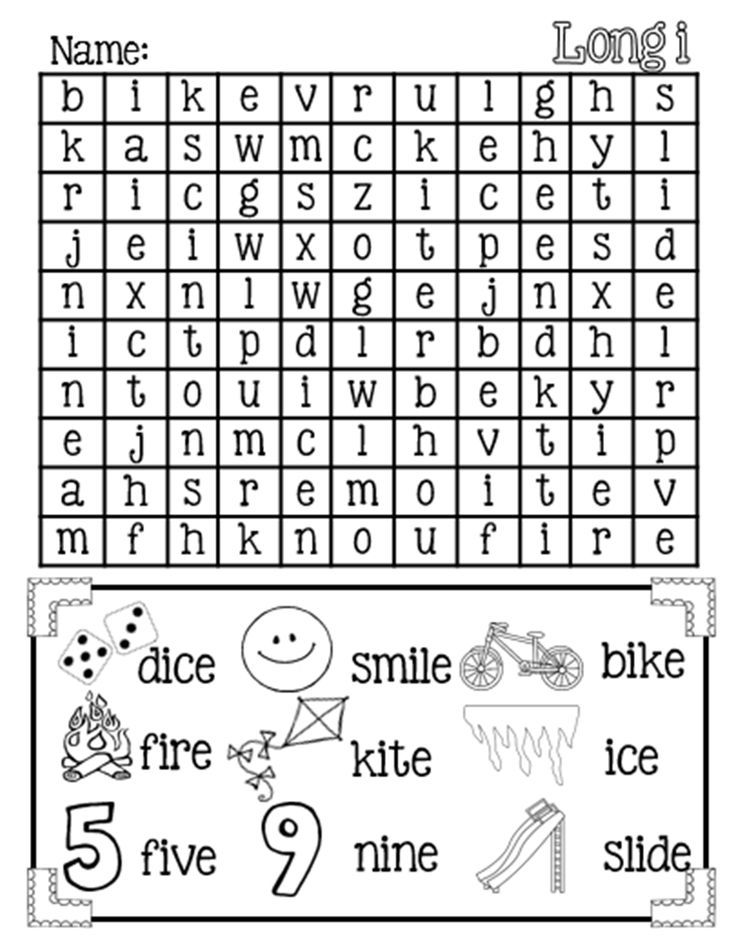 64 595.32] /Contents[204 0 R 205 0 R 206 0 R] /group> /Tabs /S /Annots [207 0R] >> endobj 70 obj > /ProcSet [/PDF /Text /ImageB /ImageC /ImageI] >> /MediaBox [0 0 419.64 595.32] /Contents 213 0 R /group> /Tabs /S >> endobj 80 obj > /XObject> /ProcSet [/PDF /Text /ImageB /ImageC /ImageI] >> /MediaBox [0 0 419.64 595.32] /Contents 220 0 R /group> /Tabs /S >> endobj 9 0 obj > /ProcSet [/PDF /Text /ImageB /ImageC /ImageI] >> /MediaBox[0 0 419.64 595.32] /Contents 221 0 R /group> /Tabs /S >> endobj 10 0 obj > /ProcSet [/PDF /Text /ImageB /ImageC /ImageI] >> /MediaBox [0 0 419.64 595.32] /Contents 222 0 R /group> /Tabs /S >> endobj 11 0 obj > /ProcSet [/PDF /Text /ImageB /ImageC /ImageI] >> /MediaBox [0 0 419.64 595.32] /Contents 223 0 R /group> /Tabs /S >> endobj 12 0 obj > /ProcSet [/PDF /Text /ImageB /ImageC /ImageI] >> /MediaBox [0 0 419.64 595.32] /Contents 224 0 R /group> /Tabs /S >> endobj 13 0 obj > /XObject> /ProcSet [/PDF /Text /ImageB /ImageC /ImageI] >> /MediaBox[0 0 419.64 595.32] /Contents 226 0 R /group> /Tabs /S >> endobj 14 0 obj > /XObject> /ProcSet [/PDF /Text /ImageB /ImageC /ImageI] >> /MediaBox [0 0 419.
64 595.32] /Contents[204 0 R 205 0 R 206 0 R] /group> /Tabs /S /Annots [207 0R] >> endobj 70 obj > /ProcSet [/PDF /Text /ImageB /ImageC /ImageI] >> /MediaBox [0 0 419.64 595.32] /Contents 213 0 R /group> /Tabs /S >> endobj 80 obj > /XObject> /ProcSet [/PDF /Text /ImageB /ImageC /ImageI] >> /MediaBox [0 0 419.64 595.32] /Contents 220 0 R /group> /Tabs /S >> endobj 9 0 obj > /ProcSet [/PDF /Text /ImageB /ImageC /ImageI] >> /MediaBox[0 0 419.64 595.32] /Contents 221 0 R /group> /Tabs /S >> endobj 10 0 obj > /ProcSet [/PDF /Text /ImageB /ImageC /ImageI] >> /MediaBox [0 0 419.64 595.32] /Contents 222 0 R /group> /Tabs /S >> endobj 11 0 obj > /ProcSet [/PDF /Text /ImageB /ImageC /ImageI] >> /MediaBox [0 0 419.64 595.32] /Contents 223 0 R /group> /Tabs /S >> endobj 12 0 obj > /ProcSet [/PDF /Text /ImageB /ImageC /ImageI] >> /MediaBox [0 0 419.64 595.32] /Contents 224 0 R /group> /Tabs /S >> endobj 13 0 obj > /XObject> /ProcSet [/PDF /Text /ImageB /ImageC /ImageI] >> /MediaBox[0 0 419.64 595.32] /Contents 226 0 R /group> /Tabs /S >> endobj 14 0 obj > /XObject> /ProcSet [/PDF /Text /ImageB /ImageC /ImageI] >> /MediaBox [0 0 419.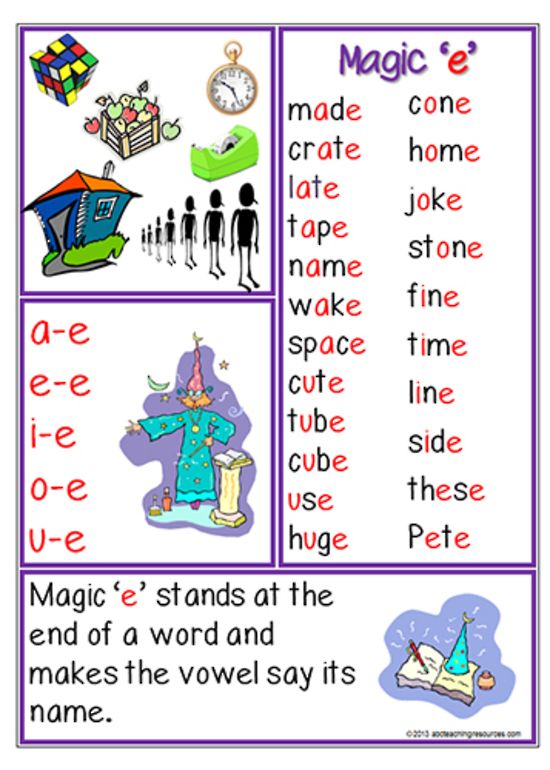 64 595.32] /Contents 227 0 R /group> /Tabs /S >> endobj 15 0 obj > /ProcSet [/PDF /Text /ImageB /ImageC /ImageI] >> /MediaBox [0 0 419.64 595.32] /Contents 228 0R /group> /Tabs /S >> endobj 16 0 obj > /ProcSet [/PDF /Text /ImageB /ImageC /ImageI] >> /MediaBox [0 0 419.64 595.32] /Contents 2290 R /group> /Tabs /S >> endobj 17 0 obj > /XObject> /ProcSet [/PDF /Text /ImageB /ImageC /ImageI] >> /MediaBox [0 0 419.64 595.32] /Contents 230 0 R /group> /Tabs /S >> endobj 18 0 obj > /ProcSet [/PDF /Text /ImageB /ImageC /ImageI] >> /MediaBox [0 0 419.64 595.32] /Contents 231 0 R /group> /Tabs /S >> endobj 19 0 obj > /XObject> /ProcSet [/PDF /Text /ImageB /ImageC /ImageI] >> /MediaBox [0 0 419.64 595.32] /Contents 232 0 R /group> /Tabs /S >> endobj 20 0 obj > /ProcSet [/PDF /Text /ImageB /ImageC /ImageI] >> /MediaBox[0 0 419.64 595.32] /Contents 233 0 R /group> /Tabs /S >> endobj 21 0 obj > /XObject> /ProcSet [/PDF /Text /ImageB /ImageC /ImageI] >> /MediaBox [0 0 419.64 595.32] /Contents 234 0 R /group> /Tabs /S >> endobj 22 0 obj > /XObject> /ProcSet [/PDF /Text /ImageB /ImageC /ImageI] >> /MediaBox [0 0 419.
64 595.32] /Contents 227 0 R /group> /Tabs /S >> endobj 15 0 obj > /ProcSet [/PDF /Text /ImageB /ImageC /ImageI] >> /MediaBox [0 0 419.64 595.32] /Contents 228 0R /group> /Tabs /S >> endobj 16 0 obj > /ProcSet [/PDF /Text /ImageB /ImageC /ImageI] >> /MediaBox [0 0 419.64 595.32] /Contents 2290 R /group> /Tabs /S >> endobj 17 0 obj > /XObject> /ProcSet [/PDF /Text /ImageB /ImageC /ImageI] >> /MediaBox [0 0 419.64 595.32] /Contents 230 0 R /group> /Tabs /S >> endobj 18 0 obj > /ProcSet [/PDF /Text /ImageB /ImageC /ImageI] >> /MediaBox [0 0 419.64 595.32] /Contents 231 0 R /group> /Tabs /S >> endobj 19 0 obj > /XObject> /ProcSet [/PDF /Text /ImageB /ImageC /ImageI] >> /MediaBox [0 0 419.64 595.32] /Contents 232 0 R /group> /Tabs /S >> endobj 20 0 obj > /ProcSet [/PDF /Text /ImageB /ImageC /ImageI] >> /MediaBox[0 0 419.64 595.32] /Contents 233 0 R /group> /Tabs /S >> endobj 21 0 obj > /XObject> /ProcSet [/PDF /Text /ImageB /ImageC /ImageI] >> /MediaBox [0 0 419.64 595.32] /Contents 234 0 R /group> /Tabs /S >> endobj 22 0 obj > /XObject> /ProcSet [/PDF /Text /ImageB /ImageC /ImageI] >> /MediaBox [0 0 419.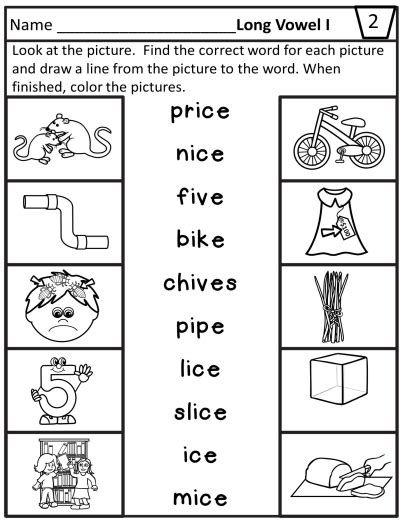 64 595.32] /Contents 235 0R /group> /Tabs /S >> endobj 23 0 obj > /ProcSet [/PDF /Text /ImageB /ImageC /ImageI] >> /MediaBox [0 0 419.64 595.32] /Contents 236 0 R /group> /Tabs /S >> endobj 24 0 obj > /XObject> /ProcSet [/PDF /Text /ImageB /ImageC /ImageI] >> /MediaBox[0 0 419.64 595.32] /Contents 237 0R /group> /Tabs /S >> endobj 25 0 obj > /XObject> /ProcSet [/PDF /Text /ImageB /ImageC /ImageI] >> /MediaBox [0 0 419.64 595.32] /Contents 239 0R /group> /Tabs /S >> endobj 26 0 obj > /ProcSet [/PDF /Text /ImageB /ImageC /ImageI] >> /MediaBox [0 0 419.64 595.32] /Contents 240 0 R /group> /Tabs /S >> endobj 27 0 obj > /XObject> /ProcSet [/PDF /Text /ImageB /ImageC /ImageI] >> /MediaBox [0 0 419.64 595.32] /Contents 242 0 R /group> /Tabs /S >> endobj 28 0 obj > /XObject> /ProcSet [/PDF /Text /ImageB /ImageC /ImageI] >> /MediaBox[0 0 419.64 595.32] /Contents 243 0 R /group> /Tabs /S >> endobj 29 0 obj > /ProcSet [/PDF /Text /ImageB /ImageC /ImageI] >> /MediaBox [0 0 419.64 595.32] /Contents 244 0 R /group> /Tabs /S >> endobj 30 0 obj > /XObject> /ProcSet [/PDF /Text /ImageB /ImageC /ImageI] >> /MediaBox [0 0 419.
64 595.32] /Contents 235 0R /group> /Tabs /S >> endobj 23 0 obj > /ProcSet [/PDF /Text /ImageB /ImageC /ImageI] >> /MediaBox [0 0 419.64 595.32] /Contents 236 0 R /group> /Tabs /S >> endobj 24 0 obj > /XObject> /ProcSet [/PDF /Text /ImageB /ImageC /ImageI] >> /MediaBox[0 0 419.64 595.32] /Contents 237 0R /group> /Tabs /S >> endobj 25 0 obj > /XObject> /ProcSet [/PDF /Text /ImageB /ImageC /ImageI] >> /MediaBox [0 0 419.64 595.32] /Contents 239 0R /group> /Tabs /S >> endobj 26 0 obj > /ProcSet [/PDF /Text /ImageB /ImageC /ImageI] >> /MediaBox [0 0 419.64 595.32] /Contents 240 0 R /group> /Tabs /S >> endobj 27 0 obj > /XObject> /ProcSet [/PDF /Text /ImageB /ImageC /ImageI] >> /MediaBox [0 0 419.64 595.32] /Contents 242 0 R /group> /Tabs /S >> endobj 28 0 obj > /XObject> /ProcSet [/PDF /Text /ImageB /ImageC /ImageI] >> /MediaBox[0 0 419.64 595.32] /Contents 243 0 R /group> /Tabs /S >> endobj 29 0 obj > /ProcSet [/PDF /Text /ImageB /ImageC /ImageI] >> /MediaBox [0 0 419.64 595.32] /Contents 244 0 R /group> /Tabs /S >> endobj 30 0 obj > /XObject> /ProcSet [/PDF /Text /ImageB /ImageC /ImageI] >> /MediaBox [0 0 419.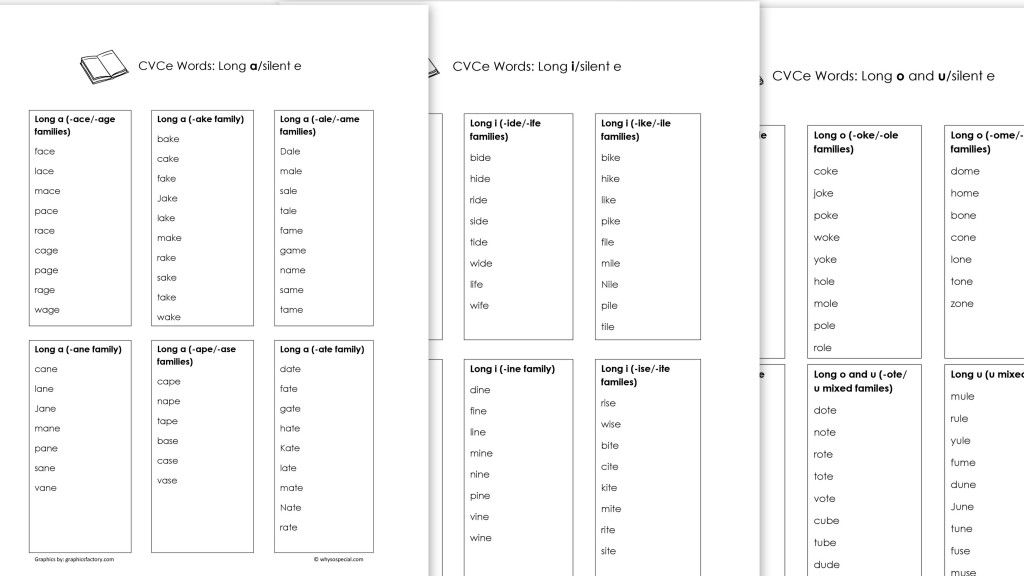 64 595.32] /Contents 245 0 R /group> /Tabs /S >> endobj 31 0 obj > /ProcSet [/PDF /Text /ImageB /ImageC /ImageI] >> /MediaBox [0 0 419.64 595.32] /Contents 246 0 R /group> /Tabs /S >> endobj 32 0 obj > /ProcSet [/PDF /Text /ImageB /ImageC /ImageI] >> /MediaBox[0 0 419.64 595.32] /Contents 247 0R /group> /Tabs /S >> endobj 33 0 obj > /ProcSet [/PDF /Text /ImageB /ImageC /ImageI] >> /MediaBox [0 0 419.64 595.32] /Contents 248 0R /group> /Tabs /S >> endobj 34 0 obj > /ProcSet [/PDF /Text /ImageB /ImageC /ImageI] >> /MediaBox [0 0 419.64 595.32] /Contents 249 0 R /group> /Tabs /S >> endobj 35 0 obj > /ProcSet [/PDF /Text /ImageB /ImageC /ImageI] >> /MediaBox [0 0 419.64 595.32] /Contents 250 0R /group> /Tabs /S >> endobj 36 0 obj > /ProcSet [/PDF /Text /ImageB /ImageC /ImageI] >> /MediaBox[0 0 419.64 595.32] /Contents 251 0R /group> /Tabs /S >> endobj 37 0 obj > /XObject> /ProcSet [/PDF /Text /ImageB /ImageC /ImageI] >> /MediaBox [0 0 419.64 595.32] /Contents 252 0R /group> /Tabs /S >> endobj 38 0 obj > /ProcSet [/PDF /Text /ImageB /ImageC /ImageI] >> /MediaBox [0 0 419.
64 595.32] /Contents 245 0 R /group> /Tabs /S >> endobj 31 0 obj > /ProcSet [/PDF /Text /ImageB /ImageC /ImageI] >> /MediaBox [0 0 419.64 595.32] /Contents 246 0 R /group> /Tabs /S >> endobj 32 0 obj > /ProcSet [/PDF /Text /ImageB /ImageC /ImageI] >> /MediaBox[0 0 419.64 595.32] /Contents 247 0R /group> /Tabs /S >> endobj 33 0 obj > /ProcSet [/PDF /Text /ImageB /ImageC /ImageI] >> /MediaBox [0 0 419.64 595.32] /Contents 248 0R /group> /Tabs /S >> endobj 34 0 obj > /ProcSet [/PDF /Text /ImageB /ImageC /ImageI] >> /MediaBox [0 0 419.64 595.32] /Contents 249 0 R /group> /Tabs /S >> endobj 35 0 obj > /ProcSet [/PDF /Text /ImageB /ImageC /ImageI] >> /MediaBox [0 0 419.64 595.32] /Contents 250 0R /group> /Tabs /S >> endobj 36 0 obj > /ProcSet [/PDF /Text /ImageB /ImageC /ImageI] >> /MediaBox[0 0 419.64 595.32] /Contents 251 0R /group> /Tabs /S >> endobj 37 0 obj > /XObject> /ProcSet [/PDF /Text /ImageB /ImageC /ImageI] >> /MediaBox [0 0 419.64 595.32] /Contents 252 0R /group> /Tabs /S >> endobj 38 0 obj > /ProcSet [/PDF /Text /ImageB /ImageC /ImageI] >> /MediaBox [0 0 419.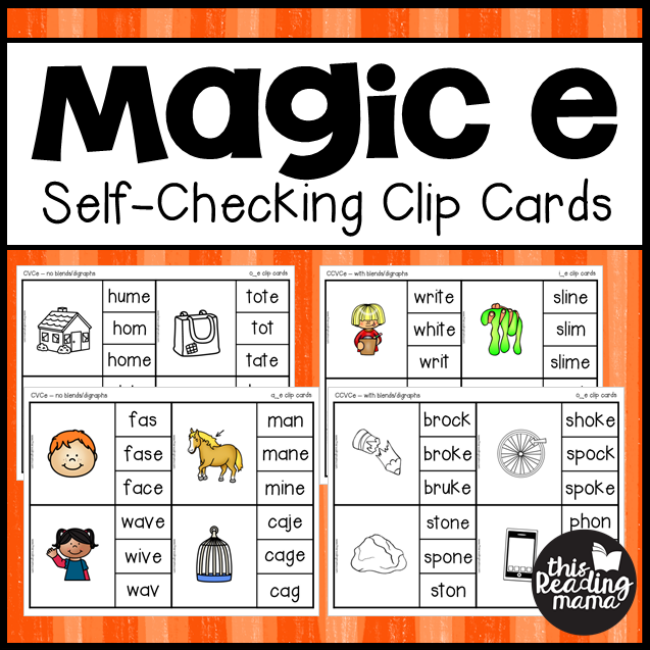 64 595.32] /Contents 253 0 R /group> /Tabs /S >> endobj 39 0 obj > /ProcSet [/PDF /Text /ImageB /ImageC /ImageI] >> /MediaBox [0 0 419.64 595.32] /Contents 254 0R /group> /Tabs /S >> endobj 40 0 obj > /XObject> /ProcSet [/PDF /Text /ImageB /ImageC /ImageI] >> /MediaBox[0 0 419.64 595.32] /Contents 255 0 R /group> /Tabs /S >> endobj 41 0 obj > /XObject> /ProcSet [/PDF /Text /ImageB /ImageC /ImageI] >> /MediaBox [0 0 419.64 595.32] /Contents 256 0 R /group> /Tabs /S >> endobj 42 0 obj > /ProcSet [/PDF /Text /ImageB /ImageC /ImageI] >> /MediaBox [0 0 419.64 595.32] /Contents 257 0 R /group> /Tabs /S >> endobj 43 0 obj > /ProcSet [/PDF /Text /ImageB /ImageC /ImageI] >> /MediaBox [0 0 419.64 595.32] /Contents 258 0 R /group> /Tabs /S >> endobj 44 0 obj > /ProcSet [/PDF /Text /ImageB /ImageC /ImageI] >> /MediaBox[0 0 419.64 595.32] /Contents 259 0 R /group> /Tabs /S >> endobj 45 0 obj > /ProcSet [/PDF /Text /ImageB /ImageC /ImageI] >> /MediaBox [0 0 419.64 595.32] /Contents 260 0 R /group> /Tabs /S >> endobj 46 0 obj > /ProcSet [/PDF /Text /ImageB /ImageC /ImageI] >> /MediaBox [0 0 419.
64 595.32] /Contents 253 0 R /group> /Tabs /S >> endobj 39 0 obj > /ProcSet [/PDF /Text /ImageB /ImageC /ImageI] >> /MediaBox [0 0 419.64 595.32] /Contents 254 0R /group> /Tabs /S >> endobj 40 0 obj > /XObject> /ProcSet [/PDF /Text /ImageB /ImageC /ImageI] >> /MediaBox[0 0 419.64 595.32] /Contents 255 0 R /group> /Tabs /S >> endobj 41 0 obj > /XObject> /ProcSet [/PDF /Text /ImageB /ImageC /ImageI] >> /MediaBox [0 0 419.64 595.32] /Contents 256 0 R /group> /Tabs /S >> endobj 42 0 obj > /ProcSet [/PDF /Text /ImageB /ImageC /ImageI] >> /MediaBox [0 0 419.64 595.32] /Contents 257 0 R /group> /Tabs /S >> endobj 43 0 obj > /ProcSet [/PDF /Text /ImageB /ImageC /ImageI] >> /MediaBox [0 0 419.64 595.32] /Contents 258 0 R /group> /Tabs /S >> endobj 44 0 obj > /ProcSet [/PDF /Text /ImageB /ImageC /ImageI] >> /MediaBox[0 0 419.64 595.32] /Contents 259 0 R /group> /Tabs /S >> endobj 45 0 obj > /ProcSet [/PDF /Text /ImageB /ImageC /ImageI] >> /MediaBox [0 0 419.64 595.32] /Contents 260 0 R /group> /Tabs /S >> endobj 46 0 obj > /ProcSet [/PDF /Text /ImageB /ImageC /ImageI] >> /MediaBox [0 0 419.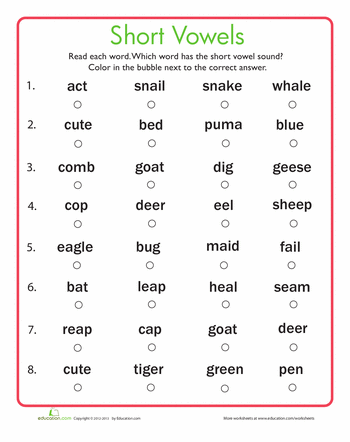 64 595.32] /Contents 261 0 R /group> /Tabs /S >> endobj 47 0 obj > /ProcSet [/PDF /Text /ImageB /ImageC /ImageI] >> /MediaBox [0 0 419.64 595.32] /Contents 262 0 R /group> /Tabs /S >> endobj 48 0 obj > /XObject> /ProcSet [/PDF /Text /ImageB /ImageC /ImageI] >> /MediaBox[0 0 419.64 595.32] /Contents 263 0 R /group> /Tabs /S >> endobj 49 0 obj > /ProcSet [/PDF /Text /ImageB /ImageC /ImageI] >> /MediaBox [0 0 419.64 595.32] /Contents 264 0 R /group> /Tabs /S >> endobj 50 0 obj > /ProcSet [/PDF /Text /ImageB /ImageC /ImageI] >> /MediaBox [0 0 419.64 595.32] /Contents 265 0R /group> /Tabs /S >> endobj 51 0 obj > /XObject> /ProcSet [/PDF /Text /ImageB /ImageC /ImageI] >> /MediaBox [0 0 419.64 595.32] /Contents 266 0R /group> /Tabs /S >> endobj 52 0 obj > /XObject> /ProcSet [/PDF /Text /ImageB /ImageC /ImageI] >> /MediaBox[0 0 419.64 595.32] /Contents 267 0R /group> /Tabs /S >> endobj 53 0 obj > /XObject> /ProcSet [/PDF /Text /ImageB /ImageC /ImageI] >> /MediaBox [0 0 419.64 595.32] /Contents 268 0 R /group> /Tabs /S >> endobj 54 0 obj > /XObject> /ProcSet [/PDF /Text /ImageB /ImageC /ImageI] >> /MediaBox [0 0 419.
64 595.32] /Contents 261 0 R /group> /Tabs /S >> endobj 47 0 obj > /ProcSet [/PDF /Text /ImageB /ImageC /ImageI] >> /MediaBox [0 0 419.64 595.32] /Contents 262 0 R /group> /Tabs /S >> endobj 48 0 obj > /XObject> /ProcSet [/PDF /Text /ImageB /ImageC /ImageI] >> /MediaBox[0 0 419.64 595.32] /Contents 263 0 R /group> /Tabs /S >> endobj 49 0 obj > /ProcSet [/PDF /Text /ImageB /ImageC /ImageI] >> /MediaBox [0 0 419.64 595.32] /Contents 264 0 R /group> /Tabs /S >> endobj 50 0 obj > /ProcSet [/PDF /Text /ImageB /ImageC /ImageI] >> /MediaBox [0 0 419.64 595.32] /Contents 265 0R /group> /Tabs /S >> endobj 51 0 obj > /XObject> /ProcSet [/PDF /Text /ImageB /ImageC /ImageI] >> /MediaBox [0 0 419.64 595.32] /Contents 266 0R /group> /Tabs /S >> endobj 52 0 obj > /XObject> /ProcSet [/PDF /Text /ImageB /ImageC /ImageI] >> /MediaBox[0 0 419.64 595.32] /Contents 267 0R /group> /Tabs /S >> endobj 53 0 obj > /XObject> /ProcSet [/PDF /Text /ImageB /ImageC /ImageI] >> /MediaBox [0 0 419.64 595.32] /Contents 268 0 R /group> /Tabs /S >> endobj 54 0 obj > /XObject> /ProcSet [/PDF /Text /ImageB /ImageC /ImageI] >> /MediaBox [0 0 419.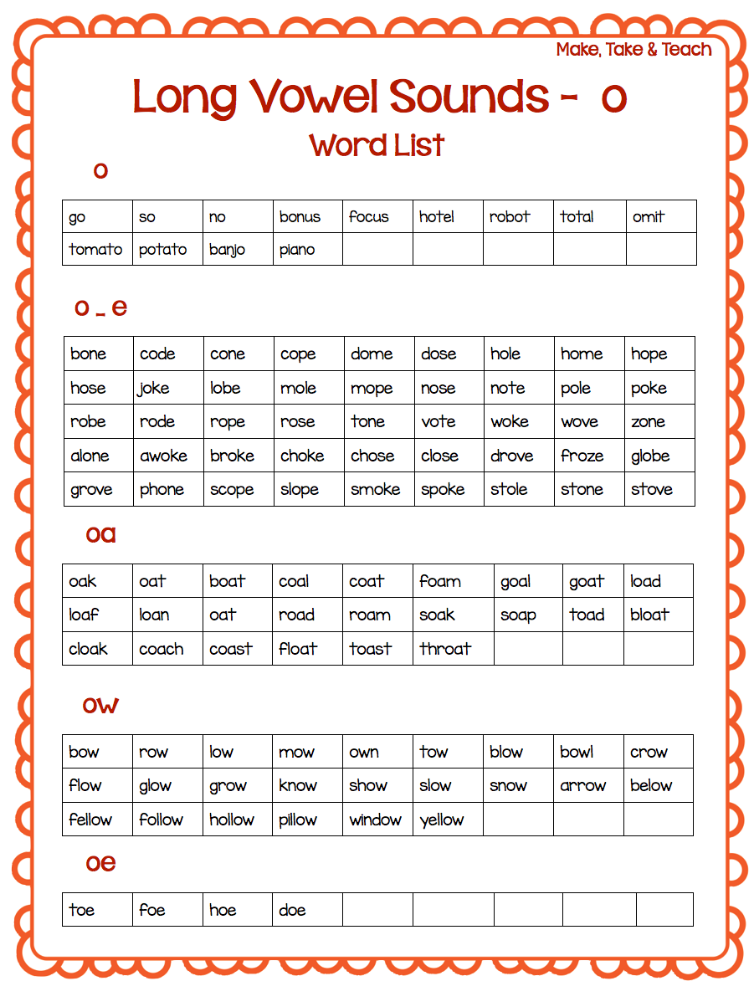 64 595.32] /Contents 269 0 R /group> /Tabs /S >> endobj 55 0 obj > /XObject> /ProcSet [/PDF /Text /ImageB /ImageC /ImageI] >> /MediaBox[0 0 419.64 595.32] /Contents 270 0R /group> /Tabs /S >> endobj 56 0 obj > /ProcSet [/PDF /Text /ImageB /ImageC /ImageI] >> /MediaBox [0 0 419.64 595.32] /Contents 271 0 R /group> /Tabs /S >> endobj 57 0 obj > /XObject> /ProcSet [/PDF /Text /ImageB /ImageC /ImageI] >> /MediaBox [0 0 419.64 595.32] /Contents 272 0 R /group> /Tabs /S >> endobj 58 0 obj > /ProcSet [/PDF /Text /ImageB /ImageC /ImageI] >> /MediaBox [0 0 419.64 595.32] /Contents 273 0 R /group> /Tabs /S >> endobj 590 obj > /ProcSet [/PDF /Text /ImageB /ImageC /ImageI] >> /MediaBox [0 0 419.64 595.32] /Contents 274 0 R /group> /Tabs /S >> endobj 60 0 obj > /XObject> /ProcSet [/PDF /Text /ImageB /ImageC /ImageI] >> /MediaBox [0 0 419.64 595.32] /Contents 276 0 R /group> /Tabs /S >> endobj 61 0 obj > /XObject> /ProcSet [/PDF /Text /ImageB /ImageC /ImageI] >> /MediaBox [0 0 419.64 595.32] /Contents 277 0 R /group> /Tabs /S >> endobj 62 0 obj > /XObject> /ProcSet [/PDF /Text /ImageB /ImageC /ImageI] >> /MediaBox[0 0 419.
64 595.32] /Contents 269 0 R /group> /Tabs /S >> endobj 55 0 obj > /XObject> /ProcSet [/PDF /Text /ImageB /ImageC /ImageI] >> /MediaBox[0 0 419.64 595.32] /Contents 270 0R /group> /Tabs /S >> endobj 56 0 obj > /ProcSet [/PDF /Text /ImageB /ImageC /ImageI] >> /MediaBox [0 0 419.64 595.32] /Contents 271 0 R /group> /Tabs /S >> endobj 57 0 obj > /XObject> /ProcSet [/PDF /Text /ImageB /ImageC /ImageI] >> /MediaBox [0 0 419.64 595.32] /Contents 272 0 R /group> /Tabs /S >> endobj 58 0 obj > /ProcSet [/PDF /Text /ImageB /ImageC /ImageI] >> /MediaBox [0 0 419.64 595.32] /Contents 273 0 R /group> /Tabs /S >> endobj 590 obj > /ProcSet [/PDF /Text /ImageB /ImageC /ImageI] >> /MediaBox [0 0 419.64 595.32] /Contents 274 0 R /group> /Tabs /S >> endobj 60 0 obj > /XObject> /ProcSet [/PDF /Text /ImageB /ImageC /ImageI] >> /MediaBox [0 0 419.64 595.32] /Contents 276 0 R /group> /Tabs /S >> endobj 61 0 obj > /XObject> /ProcSet [/PDF /Text /ImageB /ImageC /ImageI] >> /MediaBox [0 0 419.64 595.32] /Contents 277 0 R /group> /Tabs /S >> endobj 62 0 obj > /XObject> /ProcSet [/PDF /Text /ImageB /ImageC /ImageI] >> /MediaBox[0 0 419.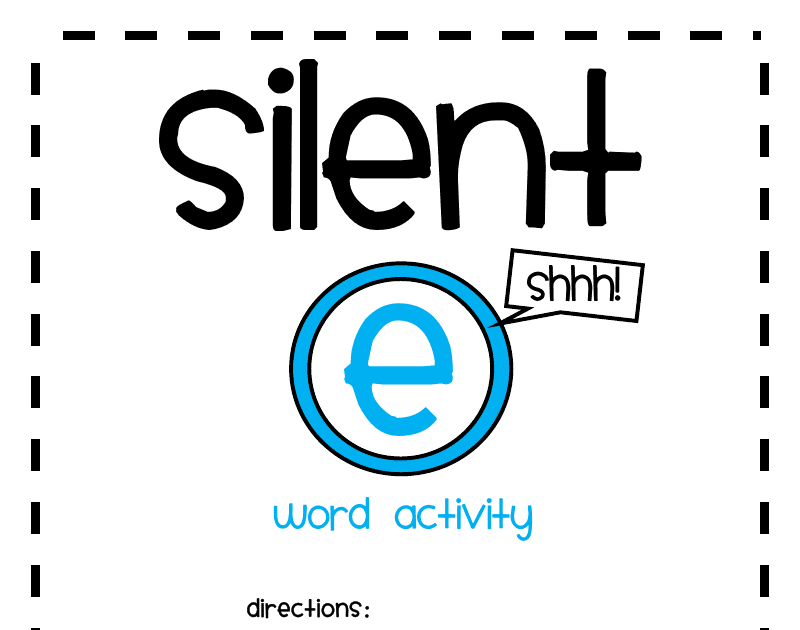 64 595.32] /Contents 278 0 R /group> /Tabs /S >> endobj 63 0 obj > /ProcSet [/PDF /Text /ImageB /ImageC /ImageI] >> /MediaBox [0 0 419.64 595.32] /Contents 279 0 R /group> /Tabs /S >> endobj 64 0 obj > /ProcSet [/PDF /Text /ImageB /ImageC /ImageI] >> /MediaBox [0 0 419.64 595.32] /Contents 280 0 R /group> /Tabs /S >> endobj 65 0 obj > /ProcSet [/PDF /Text /ImageB /ImageC /ImageI] >> /MediaBox [0 0 419.64 595.32] /Contents 281 0 R /group> /Tabs /S >> endobj 66 0 obj > /ProcSet [/PDF /Text /ImageB /ImageC /ImageI] >> /MediaBox[0 0 419.64 595.32] /Contents 282 0 R /group> /Tabs /S >> endobj 67 0 obj > /XObject> /ProcSet [/PDF /Text /ImageB /ImageC /ImageI] >> /MediaBox [0 0 419.64 595.32] /Contents 283 0 R /group> /Tabs /S >> endobj 68 0 obj > /ProcSet [/PDF /Text /ImageB /ImageC /ImageI] >> /MediaBox [0 0 419.64 595.32] /Contents 284 0 R /group> /Tabs /S >> endobj 69 0 obj > /ProcSet [/PDF /Text /ImageB /ImageC /ImageI] >> /MediaBox [0 0 419.64 595.32] /Contents 285 0 R /group> /Tabs /S >> endobj 70 0 obj > /XObject> /ProcSet [/PDF /Text /ImageB /ImageC /ImageI] >> /MediaBox[0 0 419.
64 595.32] /Contents 278 0 R /group> /Tabs /S >> endobj 63 0 obj > /ProcSet [/PDF /Text /ImageB /ImageC /ImageI] >> /MediaBox [0 0 419.64 595.32] /Contents 279 0 R /group> /Tabs /S >> endobj 64 0 obj > /ProcSet [/PDF /Text /ImageB /ImageC /ImageI] >> /MediaBox [0 0 419.64 595.32] /Contents 280 0 R /group> /Tabs /S >> endobj 65 0 obj > /ProcSet [/PDF /Text /ImageB /ImageC /ImageI] >> /MediaBox [0 0 419.64 595.32] /Contents 281 0 R /group> /Tabs /S >> endobj 66 0 obj > /ProcSet [/PDF /Text /ImageB /ImageC /ImageI] >> /MediaBox[0 0 419.64 595.32] /Contents 282 0 R /group> /Tabs /S >> endobj 67 0 obj > /XObject> /ProcSet [/PDF /Text /ImageB /ImageC /ImageI] >> /MediaBox [0 0 419.64 595.32] /Contents 283 0 R /group> /Tabs /S >> endobj 68 0 obj > /ProcSet [/PDF /Text /ImageB /ImageC /ImageI] >> /MediaBox [0 0 419.64 595.32] /Contents 284 0 R /group> /Tabs /S >> endobj 69 0 obj > /ProcSet [/PDF /Text /ImageB /ImageC /ImageI] >> /MediaBox [0 0 419.64 595.32] /Contents 285 0 R /group> /Tabs /S >> endobj 70 0 obj > /XObject> /ProcSet [/PDF /Text /ImageB /ImageC /ImageI] >> /MediaBox[0 0 419.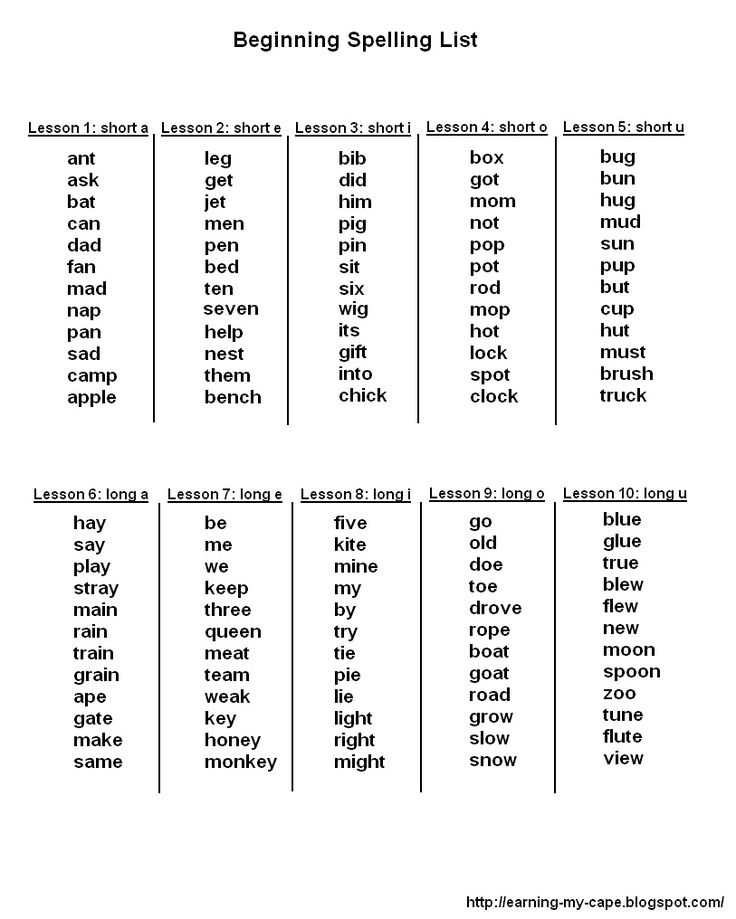 64 595.32] /Contents 286 0R /group> /Tabs /S >> endobj 71 0 obj > /XObject> /ProcSet [/PDF /Text /ImageB /ImageC /ImageI] >> /MediaBox [0 0 419.64 595.32] /Contents 287 0 R /group> /Tabs /S >> endobj 72 0 obj > /XObject> /ProcSet [/PDF /Text /ImageB /ImageC /ImageI] >> /MediaBox [0 0 419.64 595.32] /Contents 288 0 R /group> /Tabs /S >> endobj 73 0 obj > /ProcSet [/PDF /Text /ImageB /ImageC /ImageI] >> /MediaBox [0 0 419.64 595.32] /Contents 2890 R /group> /Tabs /S >> endobj 74 0 obj > /ProcSet [/PDF /Text /ImageB /ImageC /ImageI] >> /MediaBox [0 0 419.64 595.32] /Contents 290 0 R /group> /Tabs /S >> endobj 75 0 obj > /ProcSet [/PDF /Text /ImageB /ImageC /ImageI] >> /MediaBox [0 0 419.64 595.32] /Contents 291 0 R /group> /Tabs /S >> endobj 76 0 obj > /ProcSet [/PDF /Text /ImageB /ImageC /ImageI] >> /MediaBox [0 0 419.64 595.32] /Contents 292 0 R /group> /Tabs /S >> endobj 77 0 obj > /ProcSet [/PDF /Text /ImageB /ImageC /ImageI] >> /MediaBox[0 0 419.64 595.32] /Contents 293 0R /group> /Tabs /S >> endobj 78 0 obj > /ProcSet [/PDF /Text /ImageB /ImageC /ImageI] >> /MediaBox [0 0 419.
64 595.32] /Contents 286 0R /group> /Tabs /S >> endobj 71 0 obj > /XObject> /ProcSet [/PDF /Text /ImageB /ImageC /ImageI] >> /MediaBox [0 0 419.64 595.32] /Contents 287 0 R /group> /Tabs /S >> endobj 72 0 obj > /XObject> /ProcSet [/PDF /Text /ImageB /ImageC /ImageI] >> /MediaBox [0 0 419.64 595.32] /Contents 288 0 R /group> /Tabs /S >> endobj 73 0 obj > /ProcSet [/PDF /Text /ImageB /ImageC /ImageI] >> /MediaBox [0 0 419.64 595.32] /Contents 2890 R /group> /Tabs /S >> endobj 74 0 obj > /ProcSet [/PDF /Text /ImageB /ImageC /ImageI] >> /MediaBox [0 0 419.64 595.32] /Contents 290 0 R /group> /Tabs /S >> endobj 75 0 obj > /ProcSet [/PDF /Text /ImageB /ImageC /ImageI] >> /MediaBox [0 0 419.64 595.32] /Contents 291 0 R /group> /Tabs /S >> endobj 76 0 obj > /ProcSet [/PDF /Text /ImageB /ImageC /ImageI] >> /MediaBox [0 0 419.64 595.32] /Contents 292 0 R /group> /Tabs /S >> endobj 77 0 obj > /ProcSet [/PDF /Text /ImageB /ImageC /ImageI] >> /MediaBox[0 0 419.64 595.32] /Contents 293 0R /group> /Tabs /S >> endobj 78 0 obj > /ProcSet [/PDF /Text /ImageB /ImageC /ImageI] >> /MediaBox [0 0 419.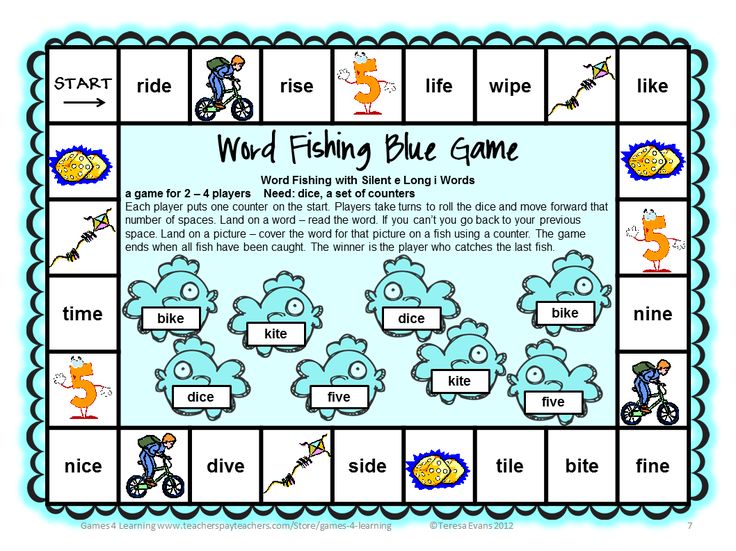 64 595.32] /Contents 294 0R /group> /Tabs /S >> endobj 79 0 obj > /ProcSet [/PDF /Text /ImageB /ImageC /ImageI] >> /MediaBox [0 0 419.64 595.32] /Contents 295 0 R /group> /Tabs /S >> endobj 80 0 obj > /XObject> /ProcSet [/PDF /Text /ImageB /ImageC /ImageI] >> /MediaBox [0 0 419.64 595.32] /Contents 296 0 R /group> /Tabs /S >> endobj 81 0 obj > /ProcSet [/PDF /Text /ImageB /ImageC /ImageI] >> /MediaBox[0 0 419.64 595.32] /Contents 298 0 R /group> /Tabs /S >> endobj 82 0 obj > /ProcSet [/PDF /Text /ImageB /ImageC /ImageI] >> /MediaBox [0 0 419.64 595.32] /Contents 299 0 R /group> /Tabs /S >> endobj 83 0 obj > /ProcSet [/PDF /Text /ImageB /ImageC /ImageI] >> /MediaBox [0 0 419.64 595.32] /Contents 300 0R /group> /Tabs /S >> endobj 84 0 obj > /XObject> /ProcSet [/PDF /Text /ImageB /ImageC /ImageI] >> /MediaBox [0 0 419.64 595.32] /Contents 301 0 R /group> /Tabs /S >> endobj 85 0 obj > /XObject> /ProcSet [/PDF /Text /ImageB /ImageC /ImageI] >> /MediaBox[0 0 419.64 595.32] /Contents 302 0 R /group> /Tabs /S >> endobj 86 0 obj > /XObject> /ProcSet [/PDF /Text /ImageB /ImageC /ImageI] >> /MediaBox [0 0 419.
64 595.32] /Contents 294 0R /group> /Tabs /S >> endobj 79 0 obj > /ProcSet [/PDF /Text /ImageB /ImageC /ImageI] >> /MediaBox [0 0 419.64 595.32] /Contents 295 0 R /group> /Tabs /S >> endobj 80 0 obj > /XObject> /ProcSet [/PDF /Text /ImageB /ImageC /ImageI] >> /MediaBox [0 0 419.64 595.32] /Contents 296 0 R /group> /Tabs /S >> endobj 81 0 obj > /ProcSet [/PDF /Text /ImageB /ImageC /ImageI] >> /MediaBox[0 0 419.64 595.32] /Contents 298 0 R /group> /Tabs /S >> endobj 82 0 obj > /ProcSet [/PDF /Text /ImageB /ImageC /ImageI] >> /MediaBox [0 0 419.64 595.32] /Contents 299 0 R /group> /Tabs /S >> endobj 83 0 obj > /ProcSet [/PDF /Text /ImageB /ImageC /ImageI] >> /MediaBox [0 0 419.64 595.32] /Contents 300 0R /group> /Tabs /S >> endobj 84 0 obj > /XObject> /ProcSet [/PDF /Text /ImageB /ImageC /ImageI] >> /MediaBox [0 0 419.64 595.32] /Contents 301 0 R /group> /Tabs /S >> endobj 85 0 obj > /XObject> /ProcSet [/PDF /Text /ImageB /ImageC /ImageI] >> /MediaBox[0 0 419.64 595.32] /Contents 302 0 R /group> /Tabs /S >> endobj 86 0 obj > /XObject> /ProcSet [/PDF /Text /ImageB /ImageC /ImageI] >> /MediaBox [0 0 419.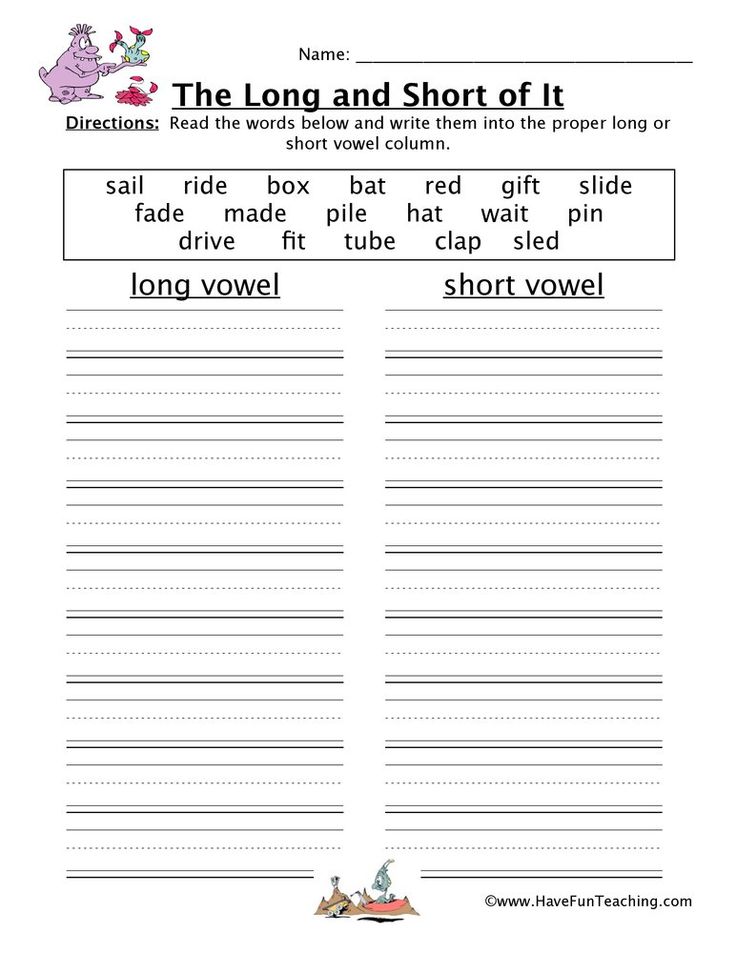 64 595.32] /Contents 303 0 R /group> /Tabs /S >> endobj 87 0 obj > /XObject> /ProcSet [/PDF /Text /ImageB /ImageC /ImageI] >> /MediaBox [0 0 419.64 595.32] /Contents 304 0 R /group> /Tabs /S >> endobj 88 0 obj > /ProcSet [/PDF /Text /ImageB /ImageC /ImageI] >> /MediaBox [0 0 419.64 595.32] /Contents 305 0R /group> /Tabs /S >> endobj 890 obj > /XObject> /ProcSet [/PDF /Text /ImageB /ImageC /ImageI] >> /MediaBox [0 0 419.64 595.32] /Contents 306 0 R /group> /Tabs /S >> endobj 90 0 obj > /ProcSet [/PDF /Text /ImageB /ImageC /ImageI] >> /MediaBox [0 0 419.64 595.32] /Contents 307 0 R /group> /Tabs /S >> endobj 91 0 obj > /XObject> /ProcSet [/PDF /Text /ImageB /ImageC /ImageI] >> /MediaBox [0 0 419.64 595.32] /Contents 308 0 R /group> /Tabs /S >> endobj 92 0 obj > /ProcSet [/PDF /Text /ImageB /ImageC /ImageI] >> /MediaBox[0 0 419.64 595.32] /Contents 309 0R /group> /Tabs /S >> endobj 93 0 obj > /XObject> /ProcSet [/PDF /Text /ImageB /ImageC /ImageI] >> /MediaBox [0 0 419.64 595.32] /Contents 310 0 R /group> /Tabs /S >> endobj 94 0 obj > /XObject> /ProcSet [/PDF /Text /ImageB /ImageC /ImageI] >> /MediaBox [0 0 419.
64 595.32] /Contents 303 0 R /group> /Tabs /S >> endobj 87 0 obj > /XObject> /ProcSet [/PDF /Text /ImageB /ImageC /ImageI] >> /MediaBox [0 0 419.64 595.32] /Contents 304 0 R /group> /Tabs /S >> endobj 88 0 obj > /ProcSet [/PDF /Text /ImageB /ImageC /ImageI] >> /MediaBox [0 0 419.64 595.32] /Contents 305 0R /group> /Tabs /S >> endobj 890 obj > /XObject> /ProcSet [/PDF /Text /ImageB /ImageC /ImageI] >> /MediaBox [0 0 419.64 595.32] /Contents 306 0 R /group> /Tabs /S >> endobj 90 0 obj > /ProcSet [/PDF /Text /ImageB /ImageC /ImageI] >> /MediaBox [0 0 419.64 595.32] /Contents 307 0 R /group> /Tabs /S >> endobj 91 0 obj > /XObject> /ProcSet [/PDF /Text /ImageB /ImageC /ImageI] >> /MediaBox [0 0 419.64 595.32] /Contents 308 0 R /group> /Tabs /S >> endobj 92 0 obj > /ProcSet [/PDF /Text /ImageB /ImageC /ImageI] >> /MediaBox[0 0 419.64 595.32] /Contents 309 0R /group> /Tabs /S >> endobj 93 0 obj > /XObject> /ProcSet [/PDF /Text /ImageB /ImageC /ImageI] >> /MediaBox [0 0 419.64 595.32] /Contents 310 0 R /group> /Tabs /S >> endobj 94 0 obj > /XObject> /ProcSet [/PDF /Text /ImageB /ImageC /ImageI] >> /MediaBox [0 0 419.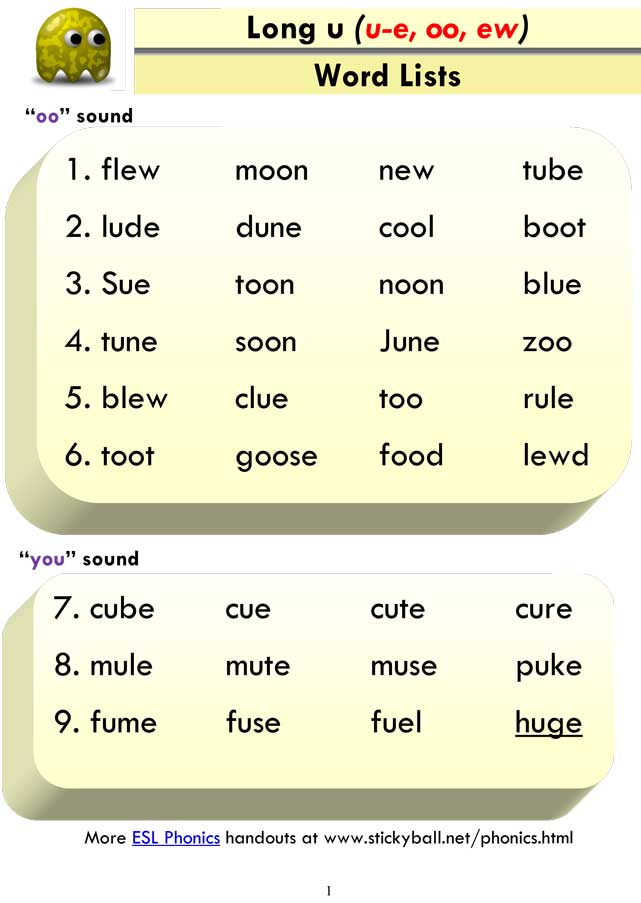 64 595.32] /Contents 311 0 R /group> /Tabs /S >> endobj 95 0 obj > /XObject> /ProcSet [/PDF /Text /ImageB /ImageC /ImageI] >> /MediaBox[0 0 419.64 595.32] /Contents 312 0 R /group> /Tabs /S >> endobj 96 0 obj > /ProcSet [/PDF /Text /ImageB /ImageC /ImageI] >> /MediaBox [0 0 419.64 595.32] /Contents 313 0 R /group> /Tabs /S >> endobj 97 0 obj > /XObject> /ProcSet [/PDF /Text /ImageB /ImageC /ImageI] >> /MediaBox [0 0 419.64 595.32] /Contents 314 0 R /group> /Tabs /S >> endobj 98 0 obj > /XObject> /ProcSet [/PDF /Text /ImageB /ImageC /ImageI] >> /MediaBox [0 0 419.64 595.32] /Contents 315 0 R /group> /Tabs /S >> endobj 99 0 obj > /ProcSet [/PDF /Text /ImageB /ImageC /ImageI] >> /MediaBox [0 0 419.64 595.32] /Contents 316 0 R /group> /Tabs /S >> endobj 100 0 obj > /XObject> /ProcSet [/PDF /Text /ImageB /ImageC /ImageI] >> /MediaBox [0 0 419.64 595.32] /Contents 317 0 R /group> /Tabs /S >> endobj 101 0 obj > /ProcSet [/PDF /Text /ImageB /ImageC /ImageI] >> /MediaBox [0 0 419.64 595.32] /Contents 318 0 R /group> /Tabs /S >> endobj 102 0 obj > /XObject> /ProcSet [/PDF /Text /ImageB /ImageC /ImageI] >> /MediaBox[0 0 419.
64 595.32] /Contents 311 0 R /group> /Tabs /S >> endobj 95 0 obj > /XObject> /ProcSet [/PDF /Text /ImageB /ImageC /ImageI] >> /MediaBox[0 0 419.64 595.32] /Contents 312 0 R /group> /Tabs /S >> endobj 96 0 obj > /ProcSet [/PDF /Text /ImageB /ImageC /ImageI] >> /MediaBox [0 0 419.64 595.32] /Contents 313 0 R /group> /Tabs /S >> endobj 97 0 obj > /XObject> /ProcSet [/PDF /Text /ImageB /ImageC /ImageI] >> /MediaBox [0 0 419.64 595.32] /Contents 314 0 R /group> /Tabs /S >> endobj 98 0 obj > /XObject> /ProcSet [/PDF /Text /ImageB /ImageC /ImageI] >> /MediaBox [0 0 419.64 595.32] /Contents 315 0 R /group> /Tabs /S >> endobj 99 0 obj > /ProcSet [/PDF /Text /ImageB /ImageC /ImageI] >> /MediaBox [0 0 419.64 595.32] /Contents 316 0 R /group> /Tabs /S >> endobj 100 0 obj > /XObject> /ProcSet [/PDF /Text /ImageB /ImageC /ImageI] >> /MediaBox [0 0 419.64 595.32] /Contents 317 0 R /group> /Tabs /S >> endobj 101 0 obj > /ProcSet [/PDF /Text /ImageB /ImageC /ImageI] >> /MediaBox [0 0 419.64 595.32] /Contents 318 0 R /group> /Tabs /S >> endobj 102 0 obj > /XObject> /ProcSet [/PDF /Text /ImageB /ImageC /ImageI] >> /MediaBox[0 0 419.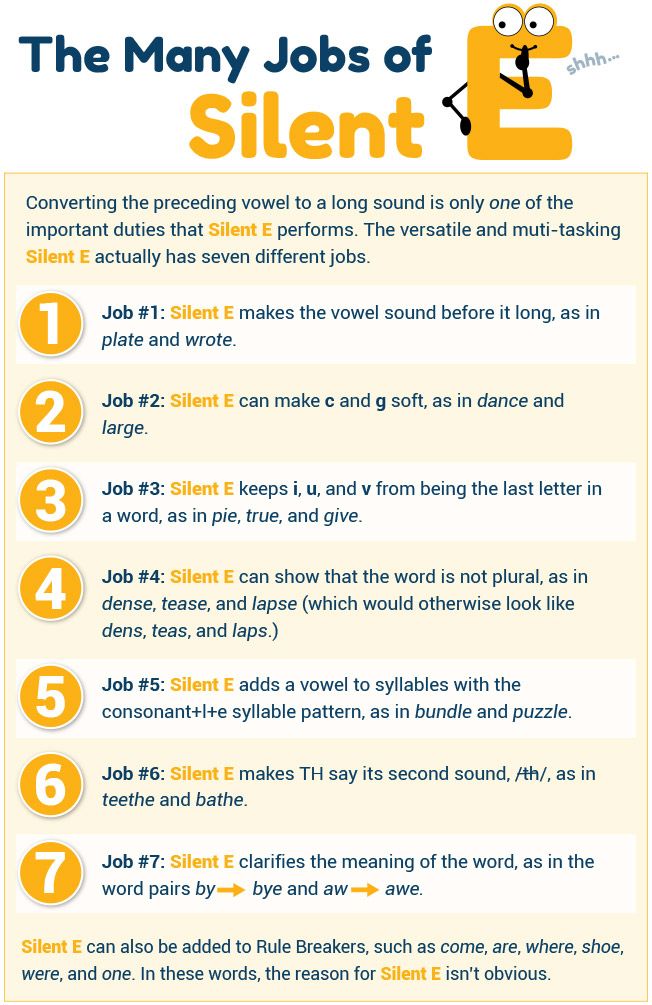 64 595.32] /Contents 319 0R /group> /Tabs /S >> endobj 103 0 obj > /ProcSet [/PDF /Text /ImageB /ImageC /ImageI] >> /MediaBox [0 0 419.64 595.32] /Contents 320 0 R /group> /Tabs /S >> endobj 104 0 obj > /XObject> /ProcSet [/PDF /Text /ImageB /ImageC /ImageI] >> /MediaBox [0 0 419.64 595.32] /Contents 321 0 R /group> /Tabs /S >> endobj 105 0 obj > /XObject> /ProcSet [/PDF /Text /ImageB /ImageC /ImageI] >> /MediaBox [0 0 419.64 595.32] /Contents 322 0 R /group> /Tabs /S >> endobj 106 0 obj > /XObject> /ProcSet [/PDF /Text /ImageB /ImageC /ImageI] >> /MediaBox[0 0 419.64 595.32] /Contents 323 0R /group> /Tabs /S >> endobj 107 0 obj > /XObject> /ProcSet [/PDF /Text /ImageB /ImageC /ImageI] >> /MediaBox [0 0 419.64 595.32] /Contents 324 0 R /group> /Tabs /S >> endobj 108 0 obj > /ProcSet [/PDF /Text /ImageB /ImageC /ImageI] >> /MediaBox [0 0 419.64 595.32] /Contents 325 0 R /group> /Tabs /S >> endobj 109 0 obj > /ProcSet [/PDF /Text /ImageB /ImageC /ImageI] >> /MediaBox [0 0 419.64 595.32] /Contents 326 0 R /group> /Tabs /S >> endobj 110 0 obj > /XObject> /ProcSet [/PDF /Text /ImageB /ImageC /ImageI] >> /MediaBox[0 0 419.
64 595.32] /Contents 319 0R /group> /Tabs /S >> endobj 103 0 obj > /ProcSet [/PDF /Text /ImageB /ImageC /ImageI] >> /MediaBox [0 0 419.64 595.32] /Contents 320 0 R /group> /Tabs /S >> endobj 104 0 obj > /XObject> /ProcSet [/PDF /Text /ImageB /ImageC /ImageI] >> /MediaBox [0 0 419.64 595.32] /Contents 321 0 R /group> /Tabs /S >> endobj 105 0 obj > /XObject> /ProcSet [/PDF /Text /ImageB /ImageC /ImageI] >> /MediaBox [0 0 419.64 595.32] /Contents 322 0 R /group> /Tabs /S >> endobj 106 0 obj > /XObject> /ProcSet [/PDF /Text /ImageB /ImageC /ImageI] >> /MediaBox[0 0 419.64 595.32] /Contents 323 0R /group> /Tabs /S >> endobj 107 0 obj > /XObject> /ProcSet [/PDF /Text /ImageB /ImageC /ImageI] >> /MediaBox [0 0 419.64 595.32] /Contents 324 0 R /group> /Tabs /S >> endobj 108 0 obj > /ProcSet [/PDF /Text /ImageB /ImageC /ImageI] >> /MediaBox [0 0 419.64 595.32] /Contents 325 0 R /group> /Tabs /S >> endobj 109 0 obj > /ProcSet [/PDF /Text /ImageB /ImageC /ImageI] >> /MediaBox [0 0 419.64 595.32] /Contents 326 0 R /group> /Tabs /S >> endobj 110 0 obj > /XObject> /ProcSet [/PDF /Text /ImageB /ImageC /ImageI] >> /MediaBox[0 0 419.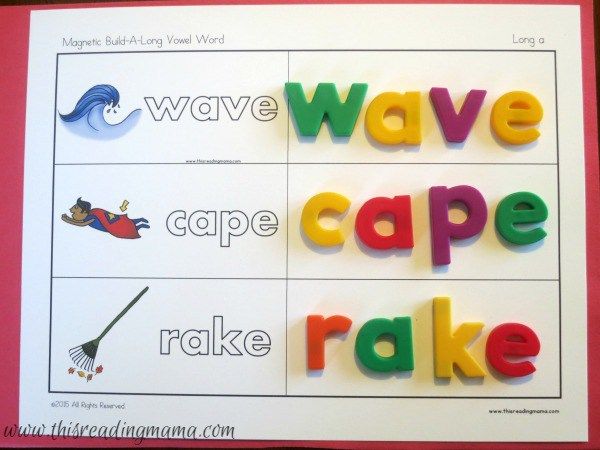 64 595.32] /Contents 327 0 R /group> /Tabs /S >> endobj 111 0 obj > /XObject> /ProcSet [/PDF /Text /ImageB /ImageC /ImageI] >> /MediaBox [0 0 419.64 595.32] /Contents 328 0 R /group> /Tabs /S >> endobj 112 0 obj > /XObject> /ProcSet [/PDF /Text /ImageB /ImageC /ImageI] >> /MediaBox [0 0 419.64 595.32] /Contents 329 0 R /group> /Tabs /S >> endobj 113 0 obj > /XObject> /ProcSet [/PDF /Text /ImageB /ImageC /ImageI] >> /MediaBox[0 0 419.64 595.32] /Contents 330 0 R /group> /Tabs /S >> endobj 114 0 obj > /XObject> /ProcSet [/PDF /Text /ImageB /ImageC /ImageI] >> /MediaBox [0 0 419.64 595.32] /Contents 331 0 R /group> /Tabs /S >> endobj 115 0 obj > /XObject> /ProcSet [/PDF /Text /ImageB /ImageC /ImageI] >> /MediaBox [0 0 419.64 595.32] /Contents 332 0 R /group> /Tabs /S >> endobj 116 0 obj > /XObject> /ProcSet [/PDF /Text /ImageB /ImageC /ImageI] >> /MediaBox[0 0 419.64 595.32] /Contents 333 0 R /group> /Tabs /S >> endobj 117 0 obj > /XObject> /ProcSet [/PDF /Text /ImageB /ImageC /ImageI] >> /MediaBox [0 0 419.
64 595.32] /Contents 327 0 R /group> /Tabs /S >> endobj 111 0 obj > /XObject> /ProcSet [/PDF /Text /ImageB /ImageC /ImageI] >> /MediaBox [0 0 419.64 595.32] /Contents 328 0 R /group> /Tabs /S >> endobj 112 0 obj > /XObject> /ProcSet [/PDF /Text /ImageB /ImageC /ImageI] >> /MediaBox [0 0 419.64 595.32] /Contents 329 0 R /group> /Tabs /S >> endobj 113 0 obj > /XObject> /ProcSet [/PDF /Text /ImageB /ImageC /ImageI] >> /MediaBox[0 0 419.64 595.32] /Contents 330 0 R /group> /Tabs /S >> endobj 114 0 obj > /XObject> /ProcSet [/PDF /Text /ImageB /ImageC /ImageI] >> /MediaBox [0 0 419.64 595.32] /Contents 331 0 R /group> /Tabs /S >> endobj 115 0 obj > /XObject> /ProcSet [/PDF /Text /ImageB /ImageC /ImageI] >> /MediaBox [0 0 419.64 595.32] /Contents 332 0 R /group> /Tabs /S >> endobj 116 0 obj > /XObject> /ProcSet [/PDF /Text /ImageB /ImageC /ImageI] >> /MediaBox[0 0 419.64 595.32] /Contents 333 0 R /group> /Tabs /S >> endobj 117 0 obj > /XObject> /ProcSet [/PDF /Text /ImageB /ImageC /ImageI] >> /MediaBox [0 0 419.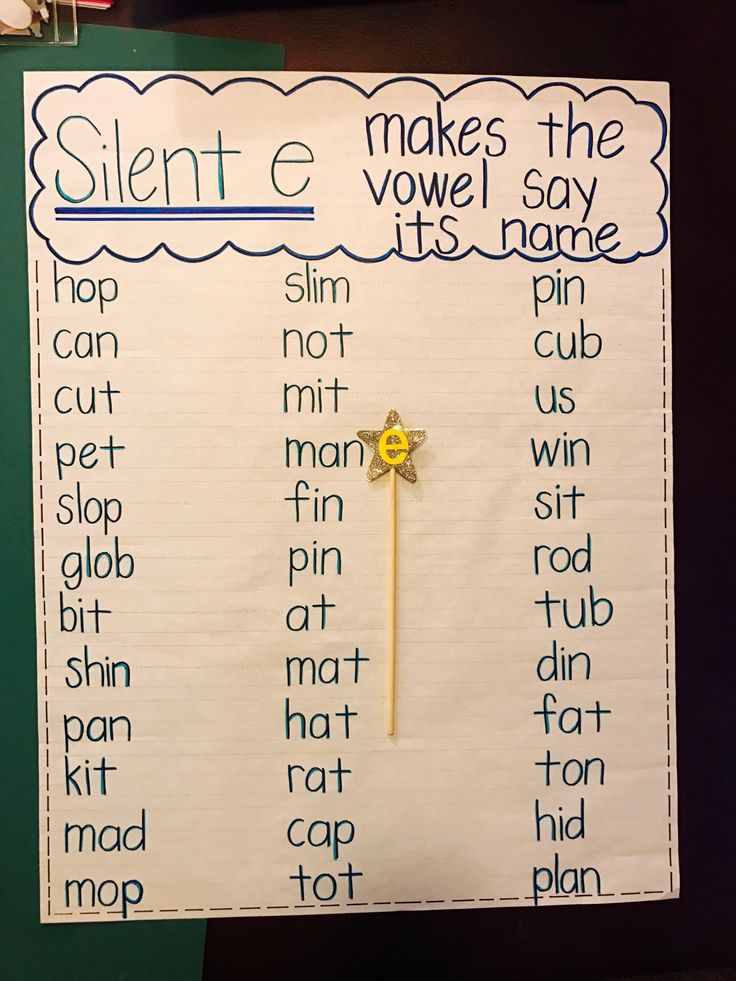 64 595.32] /Contents 334 0 R /group> /Tabs /S >> endobj 118 0 obj > /XObject> /ProcSet [/PDF /Text /ImageB /ImageC /ImageI] >> /MediaBox [0 0 419.64 595.32] /Contents 335 0 R /group> /Tabs /S >> endobj 119 0 obj > /XObject> /ProcSet [/PDF /Text /ImageB /ImageC /ImageI] >> /MediaBox[0 0 419.64 595.32] /Contents 336 0 R /group> /Tabs /S >> endobj 120 0 obj > /ProcSet [/PDF /Text /ImageB /ImageC /ImageI] >> /MediaBox [0 0 419.64 595.32] /Contents 337 0 R /group> /Tabs /S >> endobj 121 0 obj > /XObject> /ProcSet [/PDF /Text /ImageB /ImageC /ImageI] >> /MediaBox [0 0 419.64 595.32] /Contents 338 0R /group> /Tabs /S >> endobj 122 0 obj > /XObject> /ProcSet [/PDF /Text /ImageB /ImageC /ImageI] >> /MediaBox [0 0 419.64 595.32] /Contents 3390 R /group> /Tabs /S >> endobj 123 0 obj > /ProcSet [/PDF /Text /ImageB /ImageC /ImageI] >> /MediaBox [0 0 419.64 595.32] /Contents 340 0R /group> /Tabs /S >> endobj 124 0 obj > /XObject> /ProcSet [/PDF /Text /ImageB /ImageC /ImageI] >> /MediaBox [0 0 419.64 595.
64 595.32] /Contents 334 0 R /group> /Tabs /S >> endobj 118 0 obj > /XObject> /ProcSet [/PDF /Text /ImageB /ImageC /ImageI] >> /MediaBox [0 0 419.64 595.32] /Contents 335 0 R /group> /Tabs /S >> endobj 119 0 obj > /XObject> /ProcSet [/PDF /Text /ImageB /ImageC /ImageI] >> /MediaBox[0 0 419.64 595.32] /Contents 336 0 R /group> /Tabs /S >> endobj 120 0 obj > /ProcSet [/PDF /Text /ImageB /ImageC /ImageI] >> /MediaBox [0 0 419.64 595.32] /Contents 337 0 R /group> /Tabs /S >> endobj 121 0 obj > /XObject> /ProcSet [/PDF /Text /ImageB /ImageC /ImageI] >> /MediaBox [0 0 419.64 595.32] /Contents 338 0R /group> /Tabs /S >> endobj 122 0 obj > /XObject> /ProcSet [/PDF /Text /ImageB /ImageC /ImageI] >> /MediaBox [0 0 419.64 595.32] /Contents 3390 R /group> /Tabs /S >> endobj 123 0 obj > /ProcSet [/PDF /Text /ImageB /ImageC /ImageI] >> /MediaBox [0 0 419.64 595.32] /Contents 340 0R /group> /Tabs /S >> endobj 124 0 obj > /XObject> /ProcSet [/PDF /Text /ImageB /ImageC /ImageI] >> /MediaBox [0 0 419.64 595.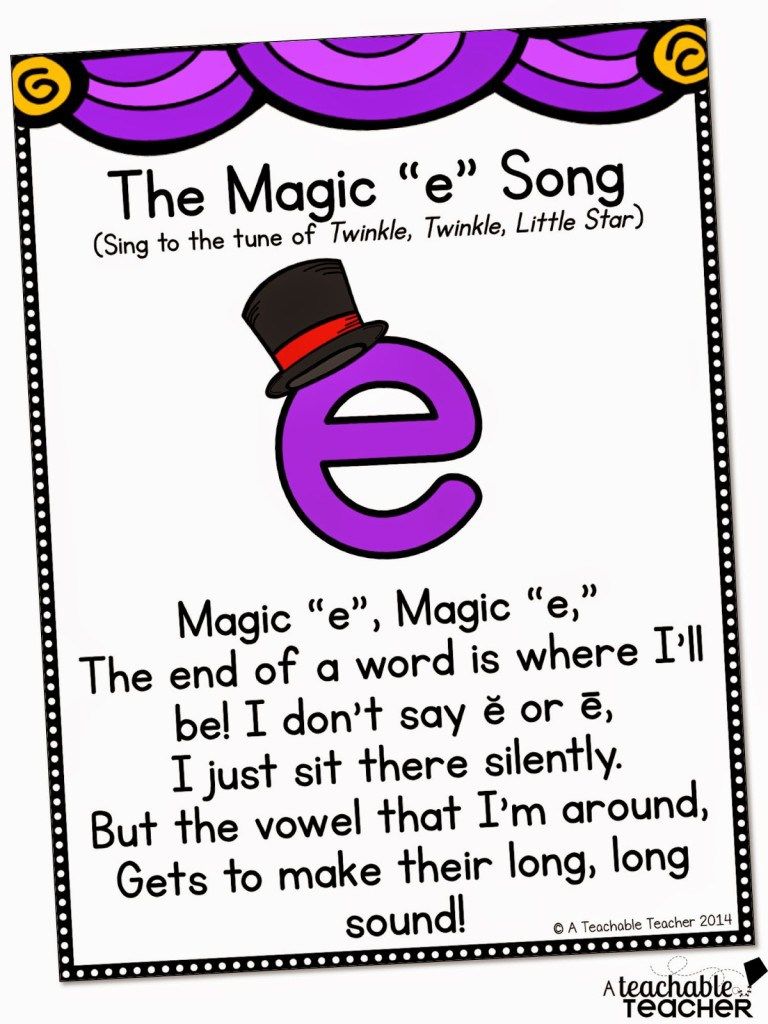 32] /Contents 341 0R /group> /Tabs /S >> endobj 125 0 obj > /XObject> /ProcSet [/PDF /Text /ImageB /ImageC /ImageI] >> /MediaBox [0 0 419.64 595.32] /Contents 342 0 R /group> /Tabs /S >> endobj 126 0 obj > /XObject> /ProcSet [/PDF /Text /ImageB /ImageC /ImageI] >> /MediaBox[0 0 419.64 595.32] /Contents 343 0 R /group> /Tabs /S >> endobj 127 0 obj > /ProcSet [/PDF /Text /ImageB /ImageC /ImageI] >> /MediaBox [0 0 419.64 595.32] /Contents 344 0 R /group> /Tabs /S >> endobj 128 0 obj > /ProcSet [/PDF /Text /ImageB /ImageC /ImageI] >> /MediaBox [0 0 419.64 595.32] /Contents 345 0R /group> /Tabs /S >> endobj 129 0 obj > /ProcSet [/PDF /Text /ImageB /ImageC /ImageI] >> /MediaBox [0 0 419.64 595.32] /Contents 346 0 R /group> /Tabs /S >> endobj 130 0 obj > /XObject> /ProcSet [/PDF /Text /ImageB /ImageC /ImageI] >> /MediaBox[0 0 419.64 595.32] /Contents 347 0 R /group> /Tabs /S >> endobj 131 0 obj > /ProcSet [/PDF /Text /ImageB /ImageC /ImageI] >> /MediaBox [0 0 419.64 595.32] /Contents 348 0 R /group> /Tabs /S >> endobj 132 0 obj > /XObject> /ProcSet [/PDF /Text /ImageB /ImageC /ImageI] >> /MediaBox [0 0 419.
32] /Contents 341 0R /group> /Tabs /S >> endobj 125 0 obj > /XObject> /ProcSet [/PDF /Text /ImageB /ImageC /ImageI] >> /MediaBox [0 0 419.64 595.32] /Contents 342 0 R /group> /Tabs /S >> endobj 126 0 obj > /XObject> /ProcSet [/PDF /Text /ImageB /ImageC /ImageI] >> /MediaBox[0 0 419.64 595.32] /Contents 343 0 R /group> /Tabs /S >> endobj 127 0 obj > /ProcSet [/PDF /Text /ImageB /ImageC /ImageI] >> /MediaBox [0 0 419.64 595.32] /Contents 344 0 R /group> /Tabs /S >> endobj 128 0 obj > /ProcSet [/PDF /Text /ImageB /ImageC /ImageI] >> /MediaBox [0 0 419.64 595.32] /Contents 345 0R /group> /Tabs /S >> endobj 129 0 obj > /ProcSet [/PDF /Text /ImageB /ImageC /ImageI] >> /MediaBox [0 0 419.64 595.32] /Contents 346 0 R /group> /Tabs /S >> endobj 130 0 obj > /XObject> /ProcSet [/PDF /Text /ImageB /ImageC /ImageI] >> /MediaBox[0 0 419.64 595.32] /Contents 347 0 R /group> /Tabs /S >> endobj 131 0 obj > /ProcSet [/PDF /Text /ImageB /ImageC /ImageI] >> /MediaBox [0 0 419.64 595.32] /Contents 348 0 R /group> /Tabs /S >> endobj 132 0 obj > /XObject> /ProcSet [/PDF /Text /ImageB /ImageC /ImageI] >> /MediaBox [0 0 419.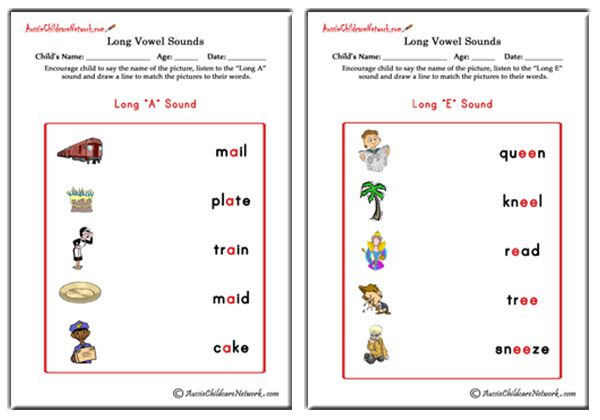 64 595.32] /Contents 349 0R /group> /Tabs /S >> endobj 133 0 obj > /ProcSet [/PDF /Text /ImageB /ImageC /ImageI] >> /MediaBox [0 0 419.64 595.32] /Contents 350 0 R /group> /Tabs /S >> endobj 134 0 obj > /XObject> /ProcSet [/PDF /Text /ImageB /ImageC /ImageI] >> /MediaBox[0 0 419.64 595.32] /Contents 351 0 R /group> /Tabs /S >> endobj 135 0 obj > /ProcSet [/PDF /Text /ImageB /ImageC /ImageI] >> /MediaBox [0 0 419.64 595.32] /Contents 352 0 R /group> /Tabs /S >> endobj 136 0 obj > /ProcSet [/PDF /Text /ImageB /ImageC /ImageI] >> /MediaBox [0 0 419.64 595.32] /Contents 353 0 R /group> /Tabs /S >> endobj 137 0 obj > /ProcSet [/PDF /Text /ImageB /ImageC /ImageI] >> /MediaBox [0 0 419.64 595.32] /Contents 354 0 R /group> /Tabs /S >> endobj 138 0 obj > /XObject> /ProcSet [/PDF /Text /ImageB /ImageC /ImageI] >> /MediaBox[0 0 419.64 595.32] /Contents 355 0 R /group> /Tabs /S >> endobj 139 0 obj > /ProcSet [/PDF /Text /ImageB /ImageC /ImageI] >> /MediaBox [0 0 419.64 595.32] /Contents 356 0R /group> /Tabs /S >> endobj 140 0 obj > /ProcSet [/PDF /Text /ImageB /ImageC /ImageI] >> /MediaBox [0 0 419.
64 595.32] /Contents 349 0R /group> /Tabs /S >> endobj 133 0 obj > /ProcSet [/PDF /Text /ImageB /ImageC /ImageI] >> /MediaBox [0 0 419.64 595.32] /Contents 350 0 R /group> /Tabs /S >> endobj 134 0 obj > /XObject> /ProcSet [/PDF /Text /ImageB /ImageC /ImageI] >> /MediaBox[0 0 419.64 595.32] /Contents 351 0 R /group> /Tabs /S >> endobj 135 0 obj > /ProcSet [/PDF /Text /ImageB /ImageC /ImageI] >> /MediaBox [0 0 419.64 595.32] /Contents 352 0 R /group> /Tabs /S >> endobj 136 0 obj > /ProcSet [/PDF /Text /ImageB /ImageC /ImageI] >> /MediaBox [0 0 419.64 595.32] /Contents 353 0 R /group> /Tabs /S >> endobj 137 0 obj > /ProcSet [/PDF /Text /ImageB /ImageC /ImageI] >> /MediaBox [0 0 419.64 595.32] /Contents 354 0 R /group> /Tabs /S >> endobj 138 0 obj > /XObject> /ProcSet [/PDF /Text /ImageB /ImageC /ImageI] >> /MediaBox[0 0 419.64 595.32] /Contents 355 0 R /group> /Tabs /S >> endobj 139 0 obj > /ProcSet [/PDF /Text /ImageB /ImageC /ImageI] >> /MediaBox [0 0 419.64 595.32] /Contents 356 0R /group> /Tabs /S >> endobj 140 0 obj > /ProcSet [/PDF /Text /ImageB /ImageC /ImageI] >> /MediaBox [0 0 419.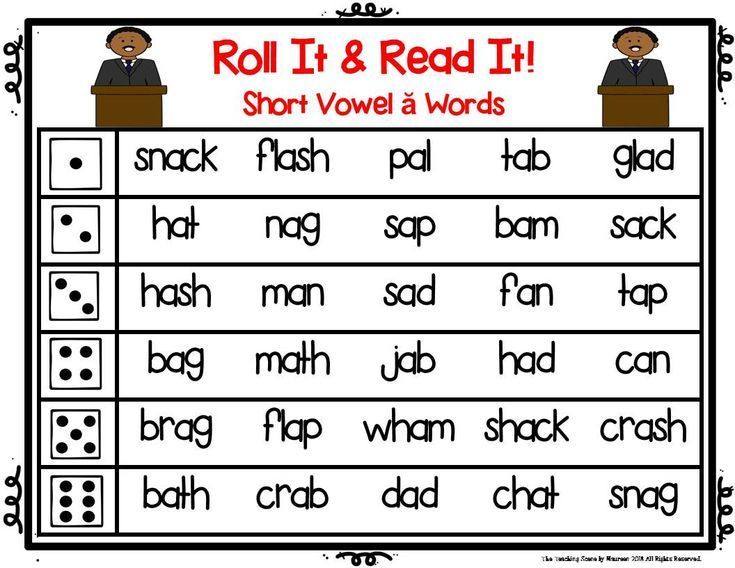 64 595.32] /Contents 357 0 R /group> /Tabs /S >> endobj 141 0 obj > /XObject> /ProcSet [/PDF /Text /ImageB /ImageC /ImageI] >> /MediaBox [0 0 419.64 595.32] /Contents 358 0 R /group> /Tabs /S >> endobj 142 0 obj > /ProcSet [/PDF /Text /ImageB /ImageC /ImageI] >> /MediaBox[0 0 419.64 595.32] /Contents 359 0R /group> /Tabs /S >> endobj 143 0 obj > /XObject> /ProcSet [/PDF /Text /ImageB /ImageC /ImageI] >> /MediaBox [0 0 419.64 595.32] /Contents 360 0 R /group> /Tabs /S >> endobj 144 0 obj > /ProcSet [/PDF /Text /ImageB /ImageC /ImageI] >> /MediaBox [0 0 419.64 595.32] /Contents 361 0 R /group> /Tabs /S >> endobj 145 0 obj > /ProcSet [/PDF /Text /ImageB /ImageC /ImageI] >> /MediaBox [0 0 419.64 595.32] /Contents 362 0 R /group> /Tabs /S >> endobj 146 0 obj > /XObject> /ProcSet [/PDF /Text /ImageB /ImageC /ImageI] >> /MediaBox[0 0 419.64 595.32] /Contents 363 0 R /group> /Tabs /S >> endobj 147 0 obj > /ProcSet [/PDF /Text /ImageB /ImageC /ImageI] >> /MediaBox [0 0 419.64 595.32] /Contents 364 0 R /group> /Tabs /S >> endobj 148 0 obj > /XObject> /ProcSet [/PDF /Text /ImageB /ImageC /ImageI] >> /MediaBox [0 0 419.
64 595.32] /Contents 357 0 R /group> /Tabs /S >> endobj 141 0 obj > /XObject> /ProcSet [/PDF /Text /ImageB /ImageC /ImageI] >> /MediaBox [0 0 419.64 595.32] /Contents 358 0 R /group> /Tabs /S >> endobj 142 0 obj > /ProcSet [/PDF /Text /ImageB /ImageC /ImageI] >> /MediaBox[0 0 419.64 595.32] /Contents 359 0R /group> /Tabs /S >> endobj 143 0 obj > /XObject> /ProcSet [/PDF /Text /ImageB /ImageC /ImageI] >> /MediaBox [0 0 419.64 595.32] /Contents 360 0 R /group> /Tabs /S >> endobj 144 0 obj > /ProcSet [/PDF /Text /ImageB /ImageC /ImageI] >> /MediaBox [0 0 419.64 595.32] /Contents 361 0 R /group> /Tabs /S >> endobj 145 0 obj > /ProcSet [/PDF /Text /ImageB /ImageC /ImageI] >> /MediaBox [0 0 419.64 595.32] /Contents 362 0 R /group> /Tabs /S >> endobj 146 0 obj > /XObject> /ProcSet [/PDF /Text /ImageB /ImageC /ImageI] >> /MediaBox[0 0 419.64 595.32] /Contents 363 0 R /group> /Tabs /S >> endobj 147 0 obj > /ProcSet [/PDF /Text /ImageB /ImageC /ImageI] >> /MediaBox [0 0 419.64 595.32] /Contents 364 0 R /group> /Tabs /S >> endobj 148 0 obj > /XObject> /ProcSet [/PDF /Text /ImageB /ImageC /ImageI] >> /MediaBox [0 0 419.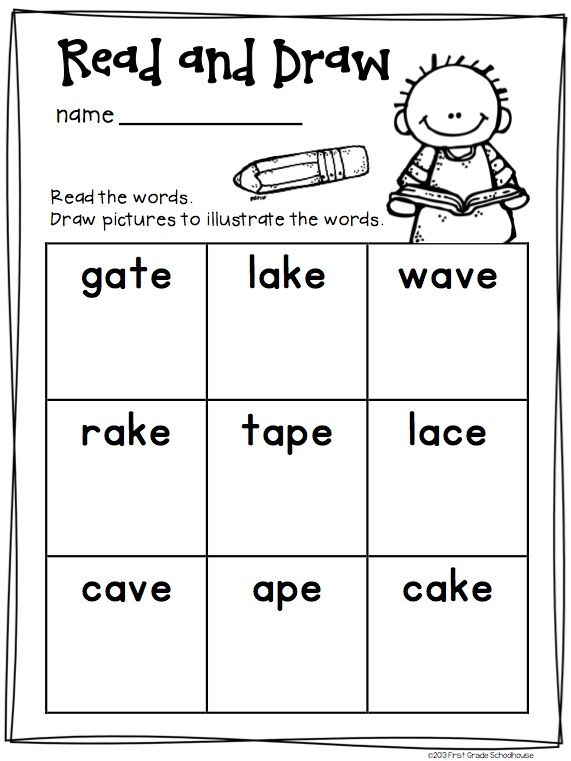 64 595.32] /Contents 365 0 R /group> /Tabs /S >> endobj 149 0 obj > /XObject> /ProcSet [/PDF /Text /ImageB /ImageC /ImageI] >> /MediaBox [0 0 419.64 595.32] /Contents 366 0 R /group> /Tabs /S >> endobj 150 0 obj > /XObject> /ProcSet [/PDF /Text /ImageB /ImageC /ImageI] >> /MediaBox[0 0 419.64 595.32] /Contents 367 0 R /group> /Tabs /S >> endobj 151 0 obj > /ProcSet [/PDF /Text /ImageB /ImageC /ImageI] >> /MediaBox [0 0 419.64 595.32] /Contents 368 0 R /group> /Tabs /S >> endobj 152 0 obj > /ProcSet [/PDF /Text /ImageB /ImageC /ImageI] >> /MediaBox [0 0 419.64 595.32] /Contents 369 0 R /group> /Tabs /S >> endobj 153 0 obj > /ProcSet [/PDF /Text /ImageB /ImageC /ImageI] >> /MediaBox [0 0 419.64 595.32] /Contents 370 0 R /group> /Tabs /S >> endobj 154 0 obj > /XObject> /ProcSet [/PDF /Text /ImageB /ImageC /ImageI] >> /MediaBox[0 0 419.64 595.32] /Contents 371 0R /group> /Tabs /S >> endobj 155 0 obj > /XObject> /ProcSet [/PDF /Text /ImageB /ImageC /ImageI] >> /MediaBox [0 0 419.64 595.32] /Contents 372 0R /group> /Tabs /S >> endobj 156 0 obj > /XObject> /ProcSet [/PDF /Text /ImageB /ImageC /ImageI] >> /MediaBox [0 0 419.
64 595.32] /Contents 365 0 R /group> /Tabs /S >> endobj 149 0 obj > /XObject> /ProcSet [/PDF /Text /ImageB /ImageC /ImageI] >> /MediaBox [0 0 419.64 595.32] /Contents 366 0 R /group> /Tabs /S >> endobj 150 0 obj > /XObject> /ProcSet [/PDF /Text /ImageB /ImageC /ImageI] >> /MediaBox[0 0 419.64 595.32] /Contents 367 0 R /group> /Tabs /S >> endobj 151 0 obj > /ProcSet [/PDF /Text /ImageB /ImageC /ImageI] >> /MediaBox [0 0 419.64 595.32] /Contents 368 0 R /group> /Tabs /S >> endobj 152 0 obj > /ProcSet [/PDF /Text /ImageB /ImageC /ImageI] >> /MediaBox [0 0 419.64 595.32] /Contents 369 0 R /group> /Tabs /S >> endobj 153 0 obj > /ProcSet [/PDF /Text /ImageB /ImageC /ImageI] >> /MediaBox [0 0 419.64 595.32] /Contents 370 0 R /group> /Tabs /S >> endobj 154 0 obj > /XObject> /ProcSet [/PDF /Text /ImageB /ImageC /ImageI] >> /MediaBox[0 0 419.64 595.32] /Contents 371 0R /group> /Tabs /S >> endobj 155 0 obj > /XObject> /ProcSet [/PDF /Text /ImageB /ImageC /ImageI] >> /MediaBox [0 0 419.64 595.32] /Contents 372 0R /group> /Tabs /S >> endobj 156 0 obj > /XObject> /ProcSet [/PDF /Text /ImageB /ImageC /ImageI] >> /MediaBox [0 0 419.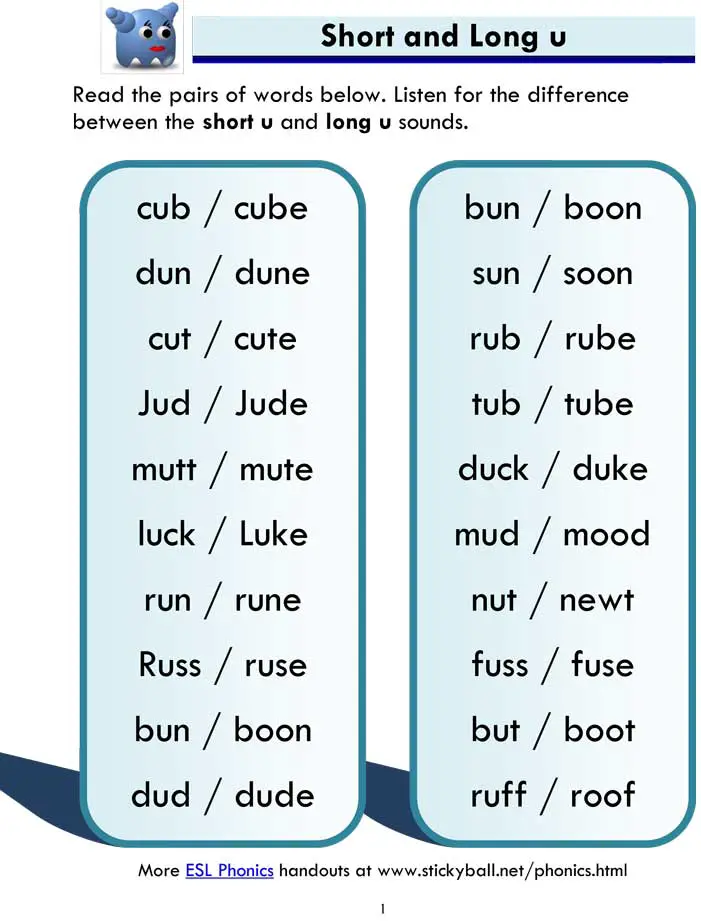 64 595.32] /Contents 373 0 R /group> /Tabs /S >> endobj 157 0 obj > /ProcSet [/PDF /Text /ImageB /ImageC /ImageI] >> /MediaBox [0 0 419.64 595.32] /Contents 374 0 R /group> /Tabs /S >> endobj 158 0 obj > /XObject> /ProcSet [/PDF /Text /ImageB /ImageC /ImageI] >> /MediaBox[0 0 419.64 595.32] /Contents 375 0 R /group> /Tabs /S >> endobj 159 0 obj > /ProcSet [/PDF /Text /ImageB /ImageC /ImageI] >> /MediaBox [0 0 419.64 595.32] /Contents 376 0 R /group> /Tabs /S >> endobj 160 0 obj > /ProcSet [/PDF /Text /ImageB /ImageC /ImageI] >> /MediaBox [0 0 419.64 595.32] /Contents 377 0 R /group> /Tabs /S >> endobj 161 0 obj > /XObject> /ProcSet [/PDF /Text /ImageB /ImageC /ImageI] >> /MediaBox [0 0 419.64 595.32] /Contents 378 0 R /group> /Tabs /S >> endobj 162 0 obj > /XObject> /ProcSet [/PDF /Text /ImageB /ImageC /ImageI] >> /MediaBox[0 0 419.64 595.32] /Contents 379 0 R /group> /Tabs /S >> endobj 163 0 obj > /ProcSet [/PDF /Text /ImageB /ImageC /ImageI] >> /MediaBox [0 0 419.64 595.32] /Contents 380 0 R /group> /Tabs /S >> endobj 164 0 obj > /ProcSet [/PDF /Text /ImageB /ImageC /ImageI] >> /MediaBox [0 0 419.
64 595.32] /Contents 373 0 R /group> /Tabs /S >> endobj 157 0 obj > /ProcSet [/PDF /Text /ImageB /ImageC /ImageI] >> /MediaBox [0 0 419.64 595.32] /Contents 374 0 R /group> /Tabs /S >> endobj 158 0 obj > /XObject> /ProcSet [/PDF /Text /ImageB /ImageC /ImageI] >> /MediaBox[0 0 419.64 595.32] /Contents 375 0 R /group> /Tabs /S >> endobj 159 0 obj > /ProcSet [/PDF /Text /ImageB /ImageC /ImageI] >> /MediaBox [0 0 419.64 595.32] /Contents 376 0 R /group> /Tabs /S >> endobj 160 0 obj > /ProcSet [/PDF /Text /ImageB /ImageC /ImageI] >> /MediaBox [0 0 419.64 595.32] /Contents 377 0 R /group> /Tabs /S >> endobj 161 0 obj > /XObject> /ProcSet [/PDF /Text /ImageB /ImageC /ImageI] >> /MediaBox [0 0 419.64 595.32] /Contents 378 0 R /group> /Tabs /S >> endobj 162 0 obj > /XObject> /ProcSet [/PDF /Text /ImageB /ImageC /ImageI] >> /MediaBox[0 0 419.64 595.32] /Contents 379 0 R /group> /Tabs /S >> endobj 163 0 obj > /ProcSet [/PDF /Text /ImageB /ImageC /ImageI] >> /MediaBox [0 0 419.64 595.32] /Contents 380 0 R /group> /Tabs /S >> endobj 164 0 obj > /ProcSet [/PDF /Text /ImageB /ImageC /ImageI] >> /MediaBox [0 0 419. 64 595.32] /Contents 381 0 R /group> /Tabs /S >> endobj 165 0 obj > /ProcSet [/PDF /Text /ImageB /ImageC /ImageI] >> /MediaBox [0 0 419.64 595.32] /Contents 382 0 R /group> /Tabs /S >> endobj 166 0 obj > /XObject> /ProcSet [/PDF /Text /ImageB /ImageC /ImageI] >> /MediaBox[0 0 419.64 595.32] /Contents 383 0R /group> /Tabs /S >> endobj 167 0 obj > /XObject> /ProcSet [/PDF /Text /ImageB /ImageC /ImageI] >> /MediaBox [0 0 419.64 595.32] /Contents 384 0 R /group> /Tabs /S >> endobj 168 0 obj > /XObject> /ProcSet [/PDF /Text /ImageB /ImageC /ImageI] >> /MediaBox [0 0 419.64 595.32] /Contents 385 0 R /group> /Tabs /S >> endobj 169 0 obj > /XObject> /ProcSet [/PDF /Text /ImageB /ImageC /ImageI] >> /MediaBox[0 0 419.64 595.32] /Contents 386 0R /group> /Tabs /S >> endobj 170 0 obj > /XObject> /ProcSet [/PDF /Text /ImageB /ImageC /ImageI] >> /MediaBox [0 0 419.64 595.32] /Contents 387 0R /group> /Tabs /S >> endobj 171 0 obj > /ProcSet [/PDF /Text /ImageB /ImageC /ImageI] >> /MediaBox [0 0 419.64 595.
64 595.32] /Contents 381 0 R /group> /Tabs /S >> endobj 165 0 obj > /ProcSet [/PDF /Text /ImageB /ImageC /ImageI] >> /MediaBox [0 0 419.64 595.32] /Contents 382 0 R /group> /Tabs /S >> endobj 166 0 obj > /XObject> /ProcSet [/PDF /Text /ImageB /ImageC /ImageI] >> /MediaBox[0 0 419.64 595.32] /Contents 383 0R /group> /Tabs /S >> endobj 167 0 obj > /XObject> /ProcSet [/PDF /Text /ImageB /ImageC /ImageI] >> /MediaBox [0 0 419.64 595.32] /Contents 384 0 R /group> /Tabs /S >> endobj 168 0 obj > /XObject> /ProcSet [/PDF /Text /ImageB /ImageC /ImageI] >> /MediaBox [0 0 419.64 595.32] /Contents 385 0 R /group> /Tabs /S >> endobj 169 0 obj > /XObject> /ProcSet [/PDF /Text /ImageB /ImageC /ImageI] >> /MediaBox[0 0 419.64 595.32] /Contents 386 0R /group> /Tabs /S >> endobj 170 0 obj > /XObject> /ProcSet [/PDF /Text /ImageB /ImageC /ImageI] >> /MediaBox [0 0 419.64 595.32] /Contents 387 0R /group> /Tabs /S >> endobj 171 0 obj > /ProcSet [/PDF /Text /ImageB /ImageC /ImageI] >> /MediaBox [0 0 419.64 595.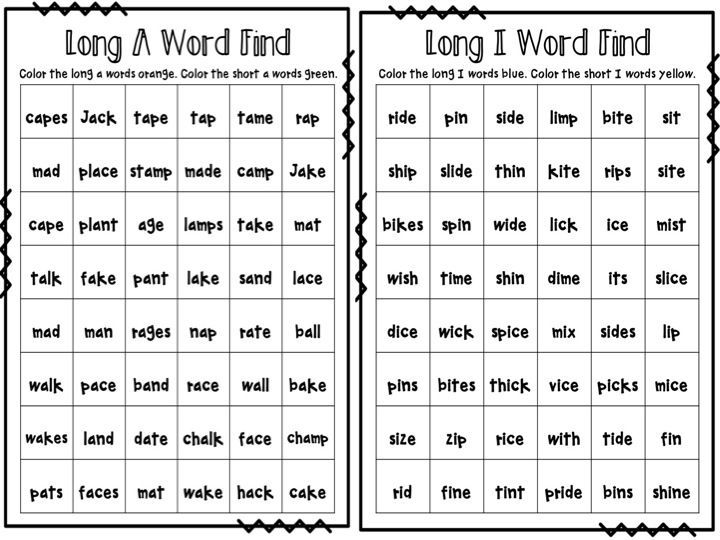 32] /Contents 388 0R /group> /Tabs /S >> endobj 172 0 obj > /ProcSet [/PDF /Text /ImageB /ImageC /ImageI] >> /MediaBox [0 0 419.64 595.32] /Contents 3890 R /group> /Tabs /S >> endobj 173 0 obj > /ProcSet [/PDF /Text /ImageB /ImageC /ImageI] >> /MediaBox [0 0 419.64 595.32] /Contents 390 0R /group> /Tabs /S >> endobj 174 0 obj > /ProcSet [/PDF /Text /ImageB /ImageC /ImageI] >> /MediaBox [0 0 419.64 595.32] /Contents 391 0 R /group> /Tabs /S >> endobj 175 0 obj > /ProcSet [/PDF /Text /ImageB /ImageC /ImageI] >> /MediaBox [0 0 419.64 595.32] /Contents 392 0R /group> /Tabs /S >> endobj 176 0 obj > /ProcSet [/PDF /Text /ImageB /ImageC /ImageI] >> /MediaBox[0 0 419.64 595.32] /Contents 393 0 R /group> /Tabs /S >> endobj 177 0 obj > /XObject> /ProcSet [/PDF /Text /ImageB /ImageC /ImageI] >> /MediaBox [0 0 419.64 595.32] /Contents 394 0R /group> /Tabs /S >> endobj 178 0 obj > /ProcSet [/PDF /Text /ImageB /ImageC /ImageI] >> /MediaBox [0 0 419.64 595.32] /Contents 395 0R /group> /Tabs /S >> endobj 179 0 obj > /ProcSet [/PDF /Text /ImageB /ImageC /ImageI] >> /MediaBox [0 0 419.
32] /Contents 388 0R /group> /Tabs /S >> endobj 172 0 obj > /ProcSet [/PDF /Text /ImageB /ImageC /ImageI] >> /MediaBox [0 0 419.64 595.32] /Contents 3890 R /group> /Tabs /S >> endobj 173 0 obj > /ProcSet [/PDF /Text /ImageB /ImageC /ImageI] >> /MediaBox [0 0 419.64 595.32] /Contents 390 0R /group> /Tabs /S >> endobj 174 0 obj > /ProcSet [/PDF /Text /ImageB /ImageC /ImageI] >> /MediaBox [0 0 419.64 595.32] /Contents 391 0 R /group> /Tabs /S >> endobj 175 0 obj > /ProcSet [/PDF /Text /ImageB /ImageC /ImageI] >> /MediaBox [0 0 419.64 595.32] /Contents 392 0R /group> /Tabs /S >> endobj 176 0 obj > /ProcSet [/PDF /Text /ImageB /ImageC /ImageI] >> /MediaBox[0 0 419.64 595.32] /Contents 393 0 R /group> /Tabs /S >> endobj 177 0 obj > /XObject> /ProcSet [/PDF /Text /ImageB /ImageC /ImageI] >> /MediaBox [0 0 419.64 595.32] /Contents 394 0R /group> /Tabs /S >> endobj 178 0 obj > /ProcSet [/PDF /Text /ImageB /ImageC /ImageI] >> /MediaBox [0 0 419.64 595.32] /Contents 395 0R /group> /Tabs /S >> endobj 179 0 obj > /ProcSet [/PDF /Text /ImageB /ImageC /ImageI] >> /MediaBox [0 0 419.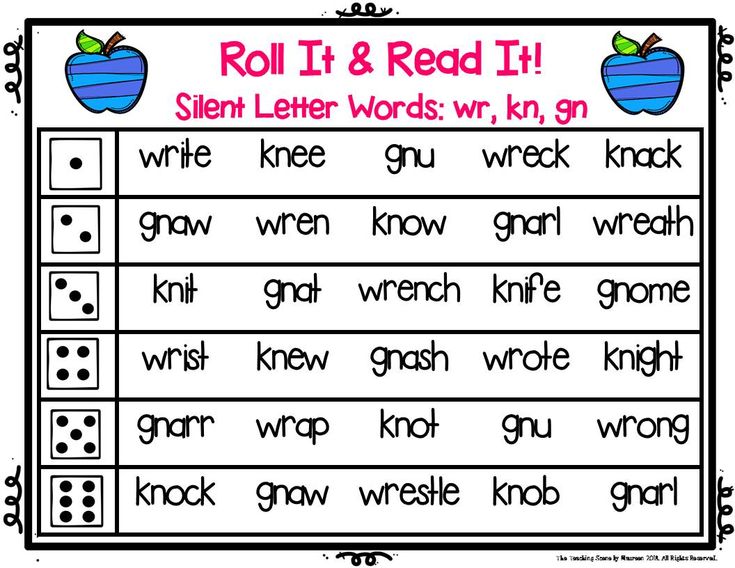 64 595.32] /Contents 3960R /group> /Tabs /S >> endobj 180 0 obj > /ProcSet [/PDF /Text /ImageB /ImageC /ImageI] >> /MediaBox [0 0 419.64 595.32] /Contents 397 0 R /group> /Tabs /S >> endobj 181 0 obj > /ProcSet [/PDF /Text /ImageB /ImageC /ImageI] >> /MediaBox [0 0 419.64 595.32] /Contents 398 0 R /group> /Tabs /S >> endobj 182 0 obj > /ProcSet [/PDF /Text /ImageB /ImageC /ImageI] >> /MediaBox [0 0 419.64 595.32] /Contents 399 0 R /group> /Tabs /S >> endobj 183 0 obj > /ProcSet [/PDF /Text /ImageB /ImageC /ImageI] >> /MediaBox[0 0 419.64 595.32] /Contents 400 0R /group> /Tabs /S >> endobj 184 0 obj > /ProcSet [/PDF /Text /ImageB /ImageC /ImageI] >> /MediaBox [0 0 419.64 595.32] /Contents 401 0 R /group> /Tabs /S >> endobj 185 0 obj > /ProcSet [/PDF /Text /ImageB /ImageC /ImageI] >> /MediaBox [0 0 419.64 595.32] /Contents 402 0 R /group> /Tabs /S >> endobj 186 0 obj > /ProcSet [/PDF /Text /ImageB /ImageC /ImageI] >> /MediaBox [0 0 419.64 595.32] /Contents 403 0R /group> /Tabs /S >> endobj 187 0 obj > /ProcSet [/PDF /Text /ImageB /ImageC /ImageI] >> /MediaBox[0 0 419.
64 595.32] /Contents 3960R /group> /Tabs /S >> endobj 180 0 obj > /ProcSet [/PDF /Text /ImageB /ImageC /ImageI] >> /MediaBox [0 0 419.64 595.32] /Contents 397 0 R /group> /Tabs /S >> endobj 181 0 obj > /ProcSet [/PDF /Text /ImageB /ImageC /ImageI] >> /MediaBox [0 0 419.64 595.32] /Contents 398 0 R /group> /Tabs /S >> endobj 182 0 obj > /ProcSet [/PDF /Text /ImageB /ImageC /ImageI] >> /MediaBox [0 0 419.64 595.32] /Contents 399 0 R /group> /Tabs /S >> endobj 183 0 obj > /ProcSet [/PDF /Text /ImageB /ImageC /ImageI] >> /MediaBox[0 0 419.64 595.32] /Contents 400 0R /group> /Tabs /S >> endobj 184 0 obj > /ProcSet [/PDF /Text /ImageB /ImageC /ImageI] >> /MediaBox [0 0 419.64 595.32] /Contents 401 0 R /group> /Tabs /S >> endobj 185 0 obj > /ProcSet [/PDF /Text /ImageB /ImageC /ImageI] >> /MediaBox [0 0 419.64 595.32] /Contents 402 0 R /group> /Tabs /S >> endobj 186 0 obj > /ProcSet [/PDF /Text /ImageB /ImageC /ImageI] >> /MediaBox [0 0 419.64 595.32] /Contents 403 0R /group> /Tabs /S >> endobj 187 0 obj > /ProcSet [/PDF /Text /ImageB /ImageC /ImageI] >> /MediaBox[0 0 419.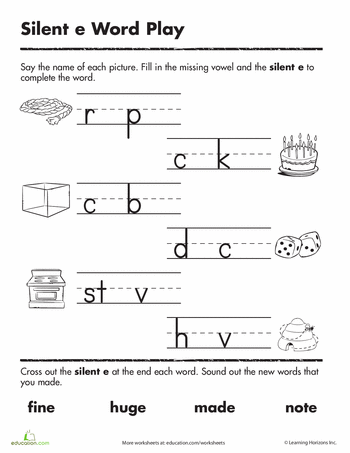 64 595.32] /Contents 404 0 R /group> /Tabs /S >> endobj 188 0 obj > /XObject> /ProcSet [/PDF /Text /ImageB /ImageC /ImageI] >> /MediaBox [0 0 419.64 595.32] /Contents 406 0 R /group> /Tabs /S >> endobj 189 0 obj > /ProcSet [/PDF /Text /ImageB /ImageC /ImageI] >> /MediaBox [0 0 419.64 595.32] /Contents 407 0 R /group> /Tabs /S >> endobj 190 0 obj > /ProcSet [/PDF /Text /ImageB /ImageC /ImageI] >> /MediaBox [0 0 419.64 595.32] /Contents 408 0R /group> /Tabs /S >> endobj 1910 obj > endobj 192 0 obj > endobj 193 0 obj > endobj 194 0 obj > endobj 195 0 obj > endobj 196 0 obj > endobj 197 0 obj > endobj 198 0 obj > endobj 199 0 obj > endobj 200 0 obj > endobj 201 0 obj > endobj 202 0 obj > endobj 203 0 obj > stream x
64 595.32] /Contents 404 0 R /group> /Tabs /S >> endobj 188 0 obj > /XObject> /ProcSet [/PDF /Text /ImageB /ImageC /ImageI] >> /MediaBox [0 0 419.64 595.32] /Contents 406 0 R /group> /Tabs /S >> endobj 189 0 obj > /ProcSet [/PDF /Text /ImageB /ImageC /ImageI] >> /MediaBox [0 0 419.64 595.32] /Contents 407 0 R /group> /Tabs /S >> endobj 190 0 obj > /ProcSet [/PDF /Text /ImageB /ImageC /ImageI] >> /MediaBox [0 0 419.64 595.32] /Contents 408 0R /group> /Tabs /S >> endobj 1910 obj > endobj 192 0 obj > endobj 193 0 obj > endobj 194 0 obj > endobj 195 0 obj > endobj 196 0 obj > endobj 197 0 obj > endobj 198 0 obj > endobj 199 0 obj > endobj 200 0 obj > endobj 201 0 obj > endobj 202 0 obj > endobj 203 0 obj > stream x Emphasis. Type of accent. Place of impact.
Lesson 4: Emphasis. Type of accent. Place of impact.
Stress is the selection of one syllable from a measure. A syllable is distinguished by a relative difference in suprasegmental features between individual syllables tact.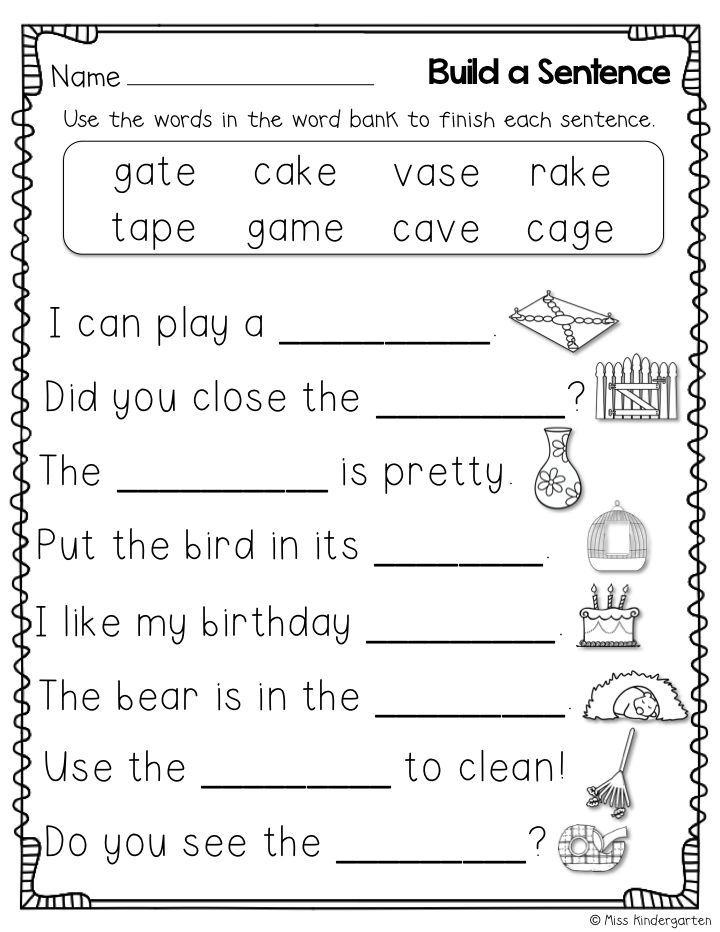
Accent type
According to the method of isolating a syllable from a measure, the stress can be divided into:
-
dynamic (expiratory, power) - the syllable is emphasized by the force of exhalation
-
quantitative (quantitative) - the syllable is distinguished by longitude
-
melodic (musical, tonal) - the syllable is distinguished by the movement of the voice tone.
In fact, there are no pure types of stress, almost always one type is accompanied by another, although one of them prevails.
Dynamic accent is available in Russian, English, Czech and other languages.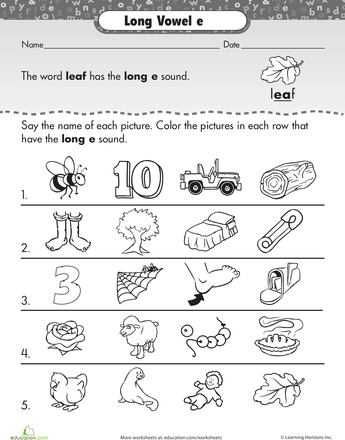 In Russian, dynamic stress is associated with quantitative stress.
In Russian, dynamic stress is associated with quantitative stress.
The melodic accent occurs, for example, in Serbo-Croatian, Lithuanian, Chinese, etc.
Dynamic stress is either strong (in Russian, English, etc.) or weak (in Czech, Georgian, etc.)
In highly dynamically stressed languages, almost all the force extruded from the lungs by the jet of air is used to pronounce stressed syllable. Unstressed syllables lack strength, they weaken and change.
Changing the sound of unstressed syllables (primarily their sonorous center) is called reduction .
According to the method of separating a syllable from a measure in Russian strong dynamic stress : vowels in unstressed syllables are reduced, which leads to a variety of vowel sounds (allophones), in which a limited the number of phonemes in the Russian language.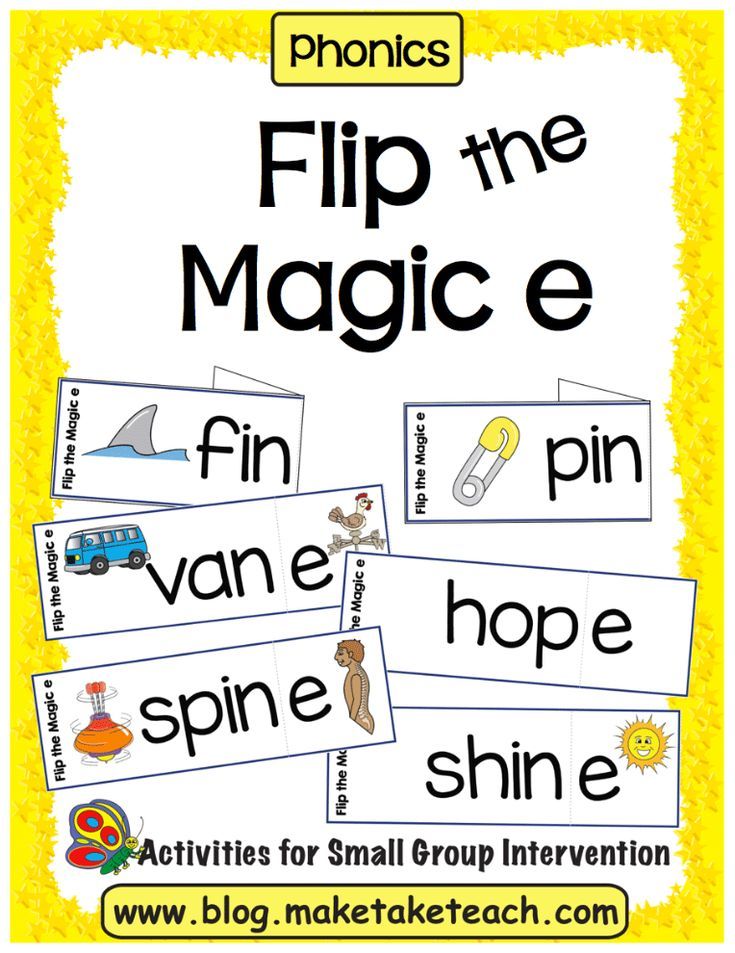 The strength of Russian stress is accompanied by duration - the substressed syllable of the Russian word is not only the strongest, but also the longest.
The strength of Russian stress is accompanied by duration - the substressed syllable of the Russian word is not only the strongest, but also the longest.
In Czech weak dynamic stress : vowels in unstressed syllables hardly change.
For example: Zá -Mek VE -ool -Cher Zá -IOC for - MK
Duration Vo -pronouncing vowels and is not associated with the dynamism of the stress. (i.e. it is a property segment elements) and does not depend on the stressed or unstressed position. Long vowels are twice as long as short ones.
Duration of the vowel sounds of the PR is not an independent property of segmental elements, it accompanies the force of dynamic stress and is its secondary characteristic. Unstressed vowels are 2-3 times longer than unstressed ones.
So, in the PR there is a strong dynamic stress with a significant quantitative component.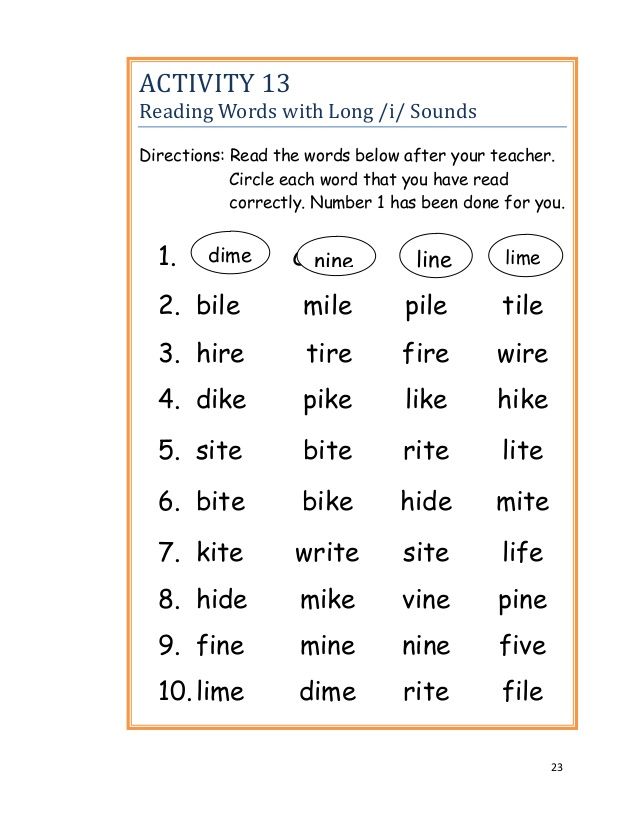
In CN a weak dynamic stress without a quantitative component.
For example:
pa-má-tka
Place of impact
According to the place of the allocated syllable in the word they differ:
-
fixed accent (it always happens on a certain syllable - in CN on the first, in French on the last)
-
free (different place), which is not associated with a specific place in the word, it falls on any syllable, for example, in RL, in English. lang.
Free accent has two subtypes:
-
free permanent i.e. in different forms of a given word, the stress always falls on the same syllable (in English, in most words in RL)
-
free movable i.
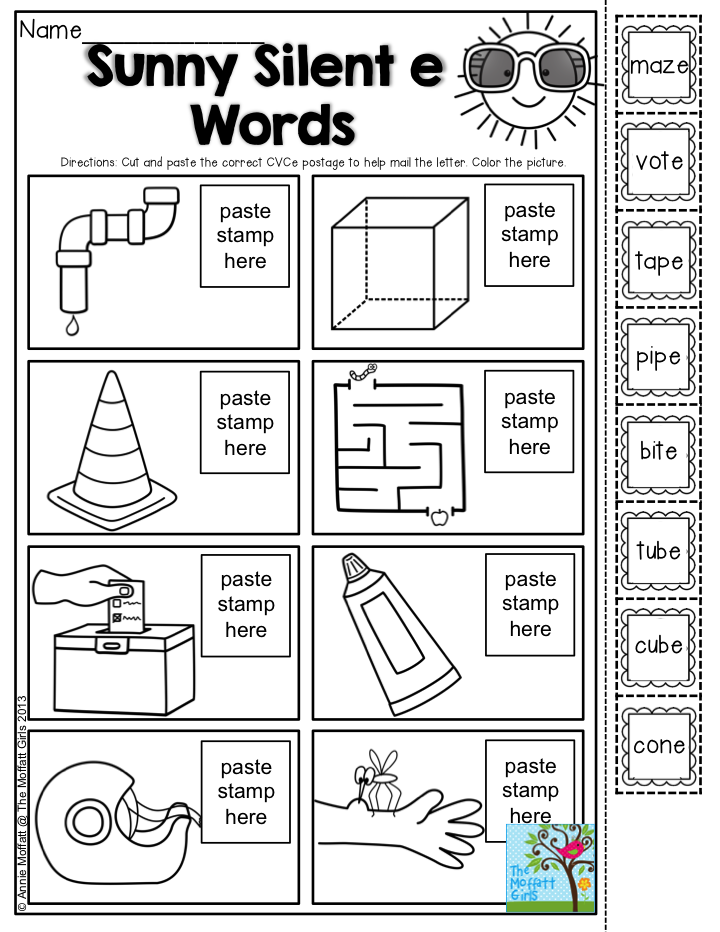 e. in different forms of this word, the stress falls on different syllables (for example, in some Russian words - mo-re - mo-r i , pi-shu - p and -shesh).
e. in different forms of this word, the stress falls on different syllables (for example, in some Russian words - mo-re - mo-r i , pi-shu - p and -shesh).
In RL, the stress is free, mobile and has the function of a semantic-distinctive, phonological means: lock - lock, pi-li - pi-whether. In SN, the stress is fixed and cannot acquire a phonological function.
But the mobility of Russian stress is limited, in most Russian words the stress is constant .
Each independent word of the Russian language has, as a rule, one stress . Functional and in a few cases also some independent words do not have stress on themselves and are adjacent to the neighboring word as proclitic or enclitic .
Enclitics of are some particles, for example: tell me, the teacher said .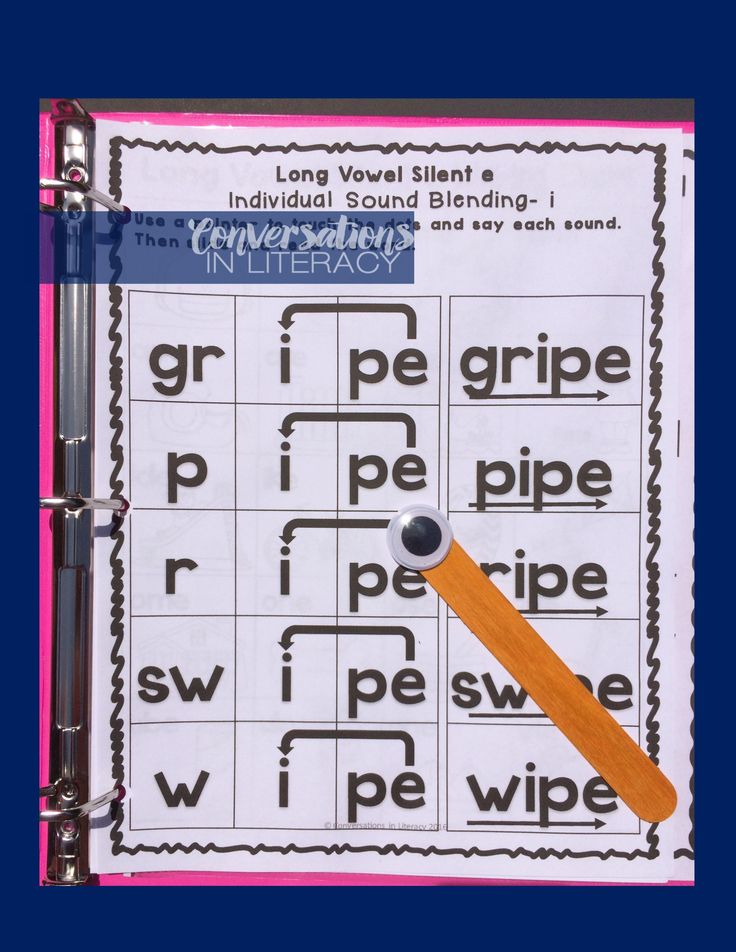 .., sometimes they can be independent words, for example: didn’t give, didn’t live, take by the hair, etc.
.., sometimes they can be independent words, for example: didn’t give, didn’t live, take by the hair, etc.
Proclitics of are usually monosyllabic prepositions, conjunctions, particles, etc. prepositions in combination with definite nouns sometimes shift the stress onto themselves (the next word becomes unstressed, enclitic). For example: on the head, by the hand, by the hand, without a trace ... (in CH this applies to almost all prepositions).
Two-syllable and three-syllable auxiliary words are either unstressed or slightly impacted (with lateral accent), e.g. in an hour or in an hour.
Polysyllabic words formed by the addition of two or more stems have, along with the main stress, one more (or more) - secondary . The main stress always falls on the stressed syllable of the last stem of a polysyllabic word, side ones are closer to its beginning, e.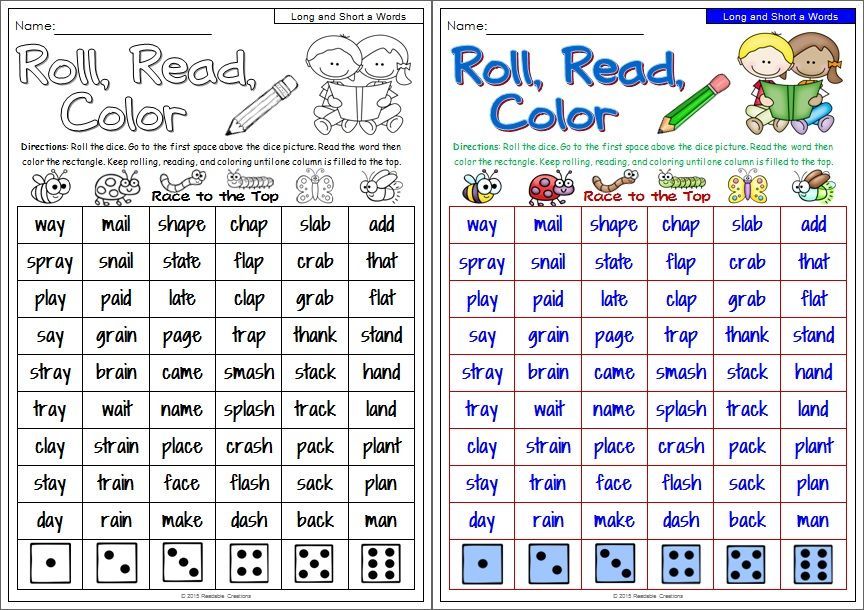 g., Far Eastern, radio broadcast. Compound words, small in volume, do not have collateral stress: locomotive, gardener.
g., Far Eastern, radio broadcast. Compound words, small in volume, do not have collateral stress: locomotive, gardener.
Exercise
Exercise 4.1
Read, Follow the change in stress in related words
GOGROD - Gorod - Goroda - City - City - Zathorodny
Hold - Khulodnov - cold - cool 9000,0002 g - Golos - Golos - Golosa - Golosa - Golosa - Golosa - Golosa - Golosa - Golosa - echo
Frost - frost - frost and lo - in s frost - frosty
Collar - gate - gate - collar - collar
Beard - beards - chin - wart
Work - earnings - earned - in s worked
Gold - gold and clear - gold - gold plated
Crow - crow - crow - crow - crow
Exercise 4.2
| Tear off - | apply - | shoot - | |||
| Blind and - | sketch - | break off | |||
| Cut - | underweight - |
Exercise 4.
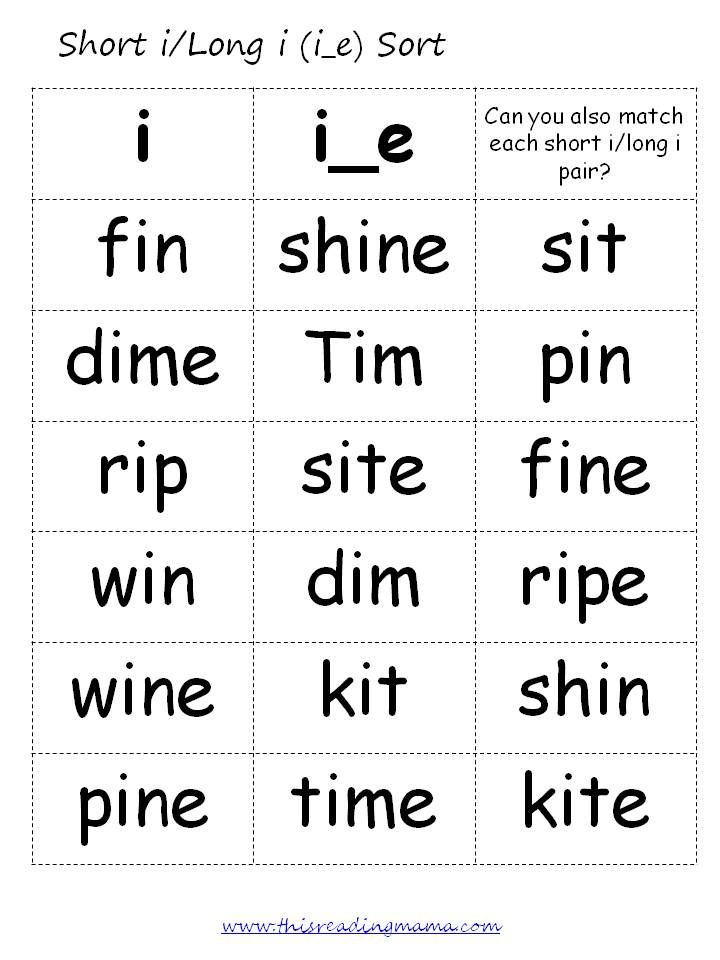 3
3 Form the words of this rhythmic pattern
tá–ta
ta–tá
ta–ta–tá
ta–tá–ta
tá–ta–ta
, steamboat, composer, album, ravine, apparatus, vegetables, room, motor vehicle, dog, road, rock, head, beard, wasp, window, stop, chrysalis, grandmother, father, sister, medicine, patronymic, shore, no place, under the window, in the forest, on the table, under the snow, near the house, near the city, above the door, across the field, across the river.
Exercise 4.5
Read, pay attention to stress and correct pronunciation
Century - century, body - body, business - business, forest - forests, color - colors
Five - Friday and , took - took, removed - took off, pull - chan and .
Literature
The lesson was prepared using the following literature:
Theoretical part
[1]Oliverius, Z.